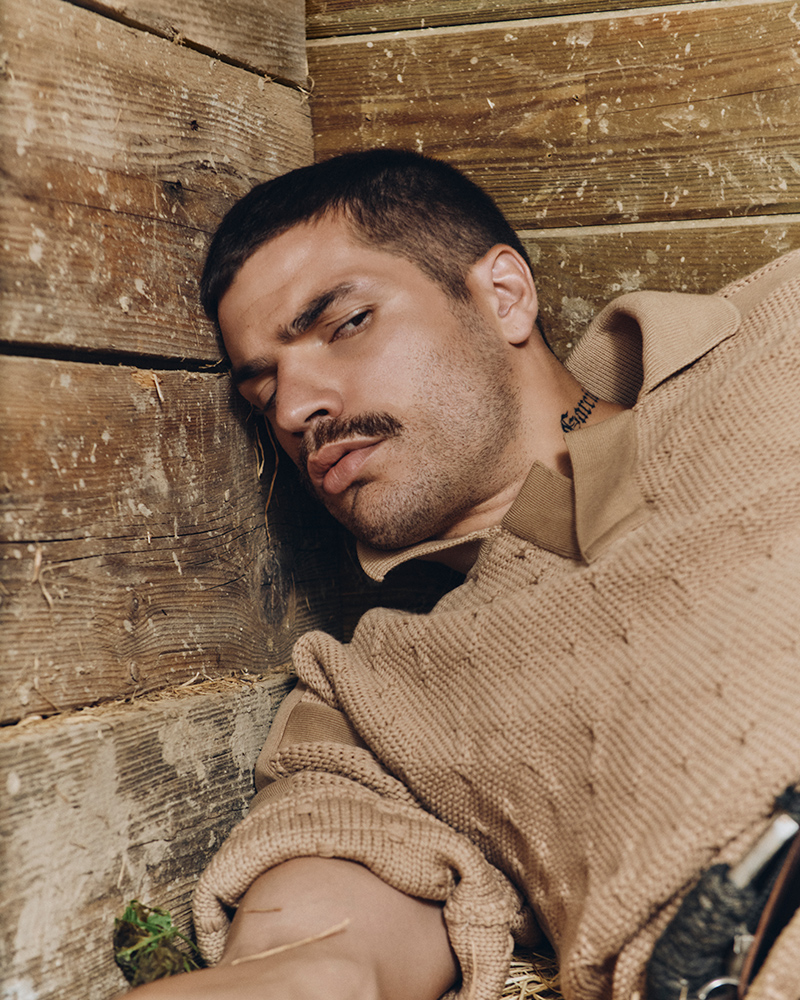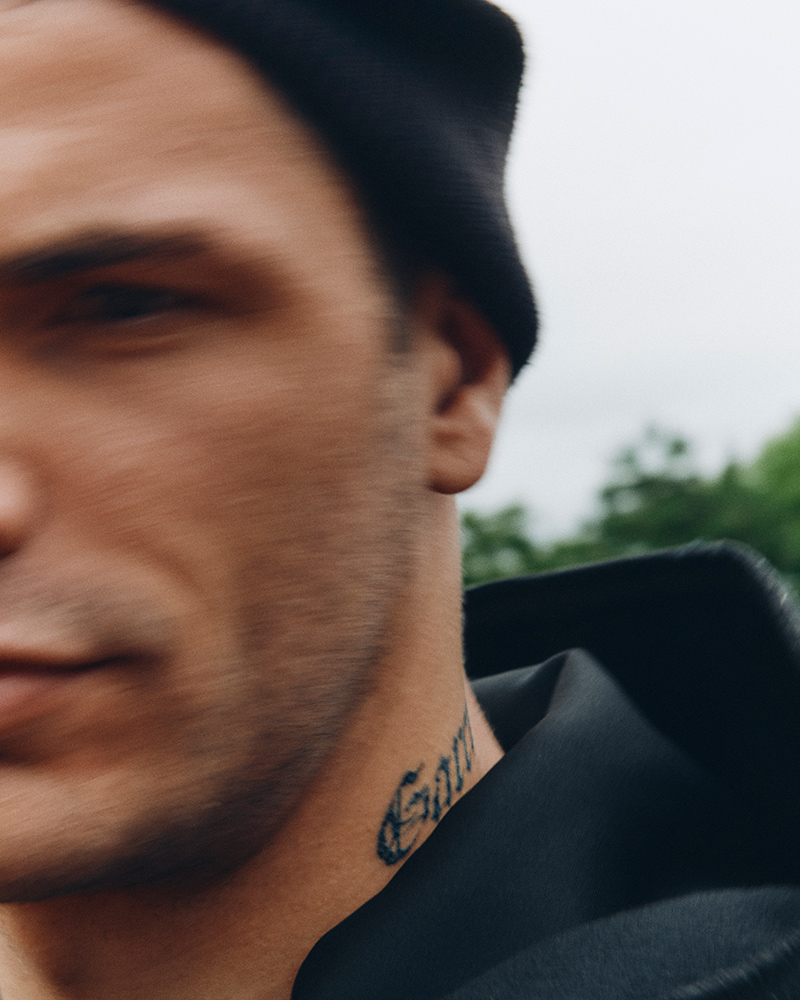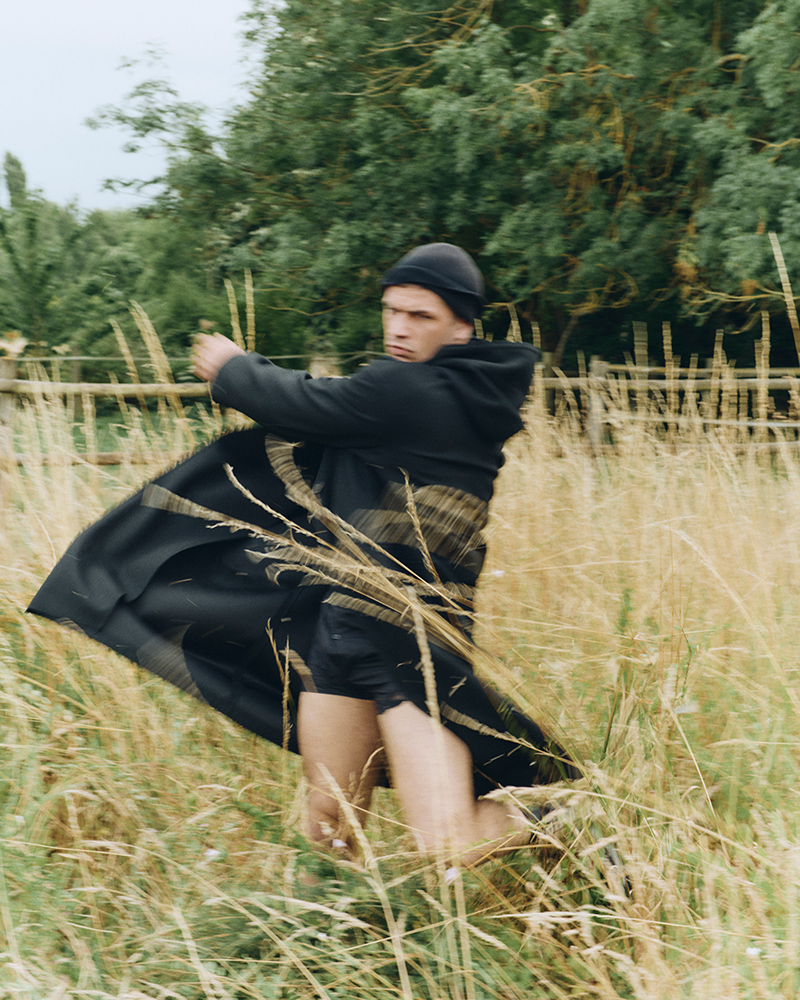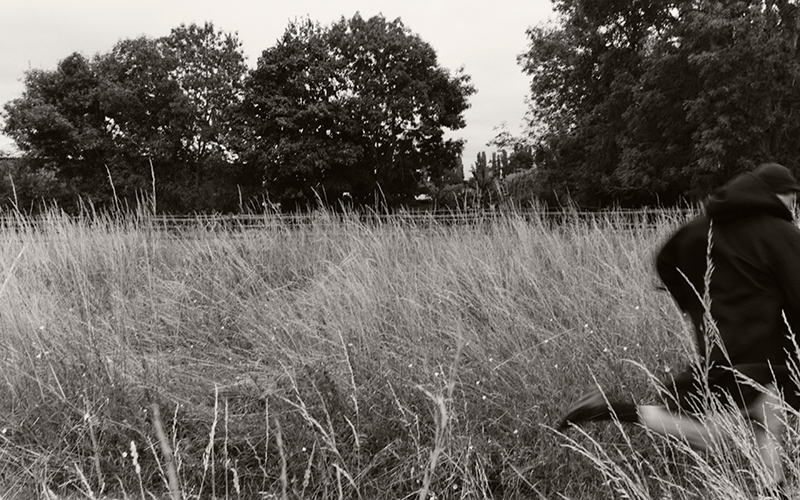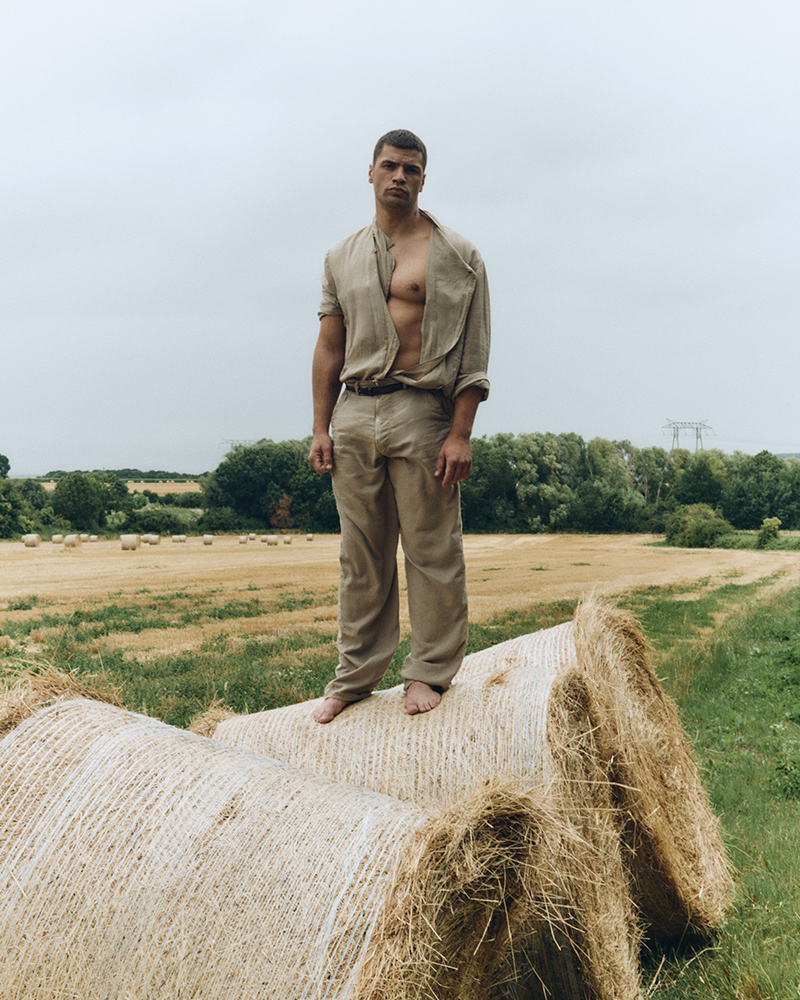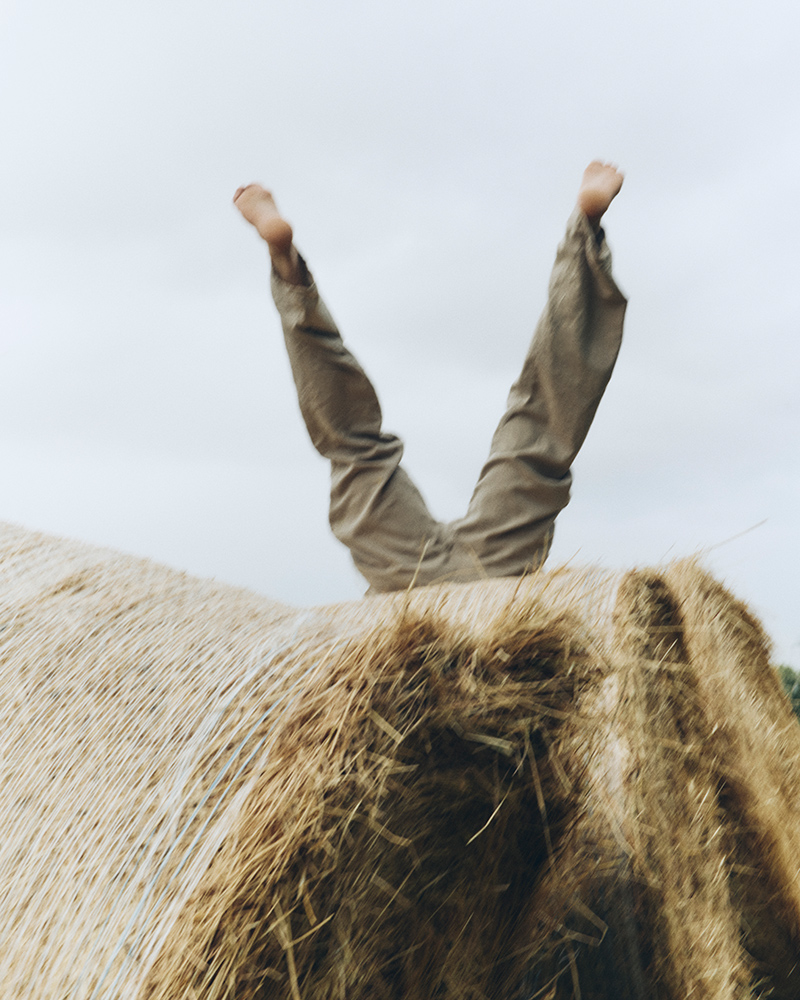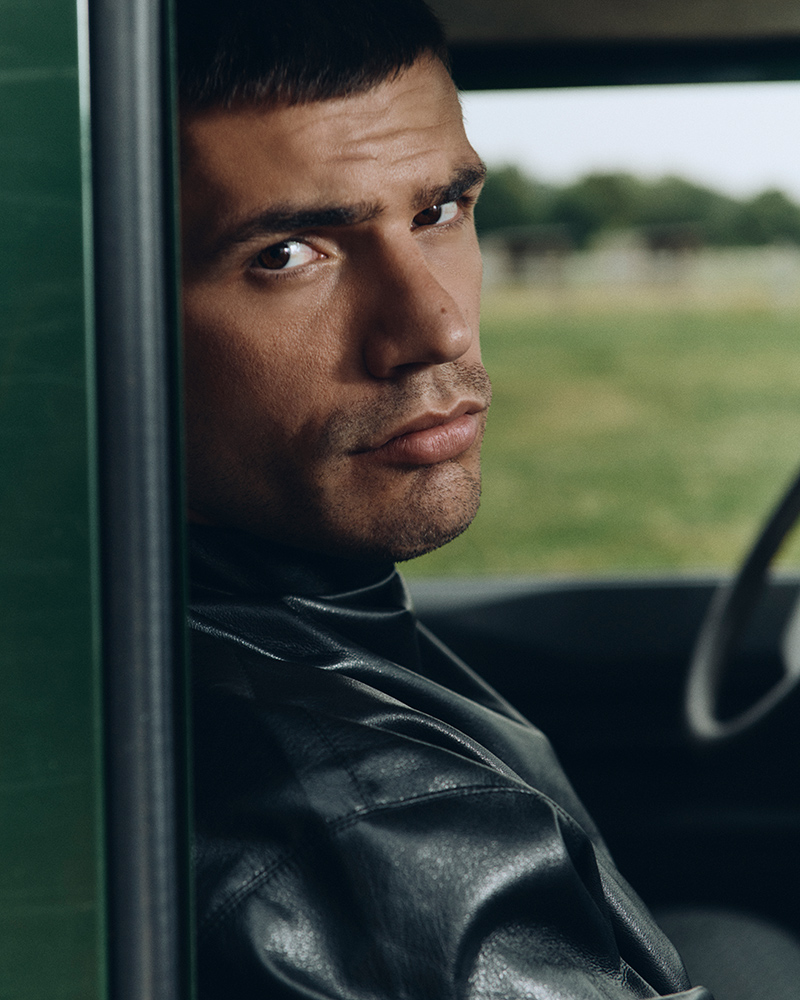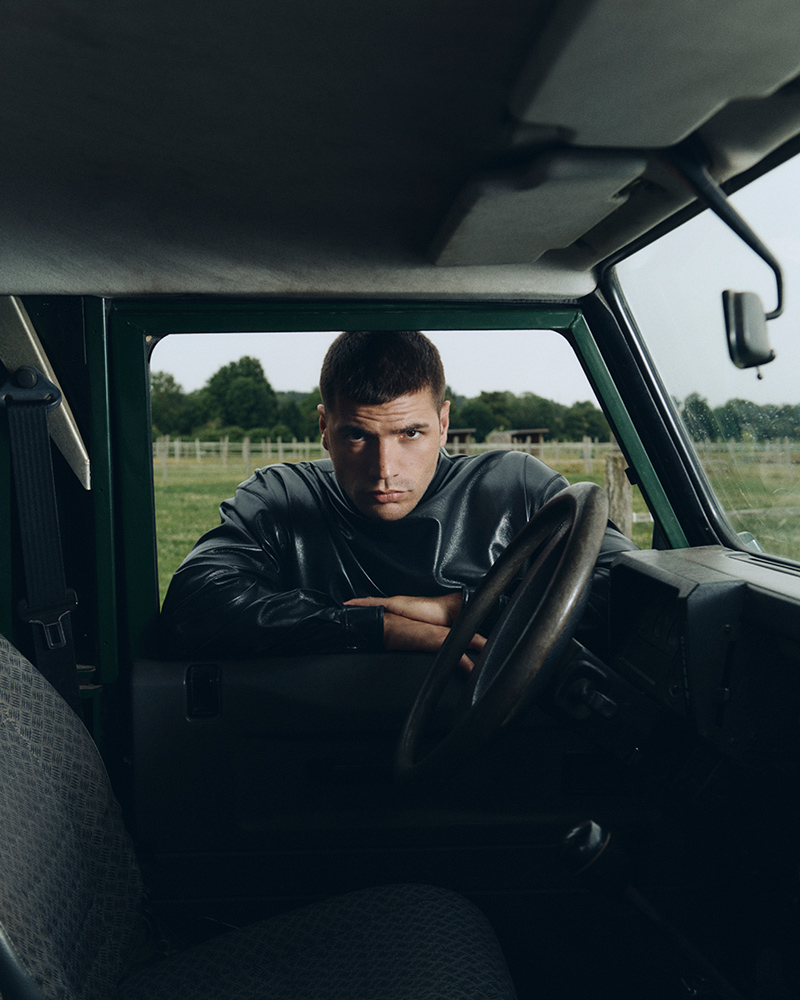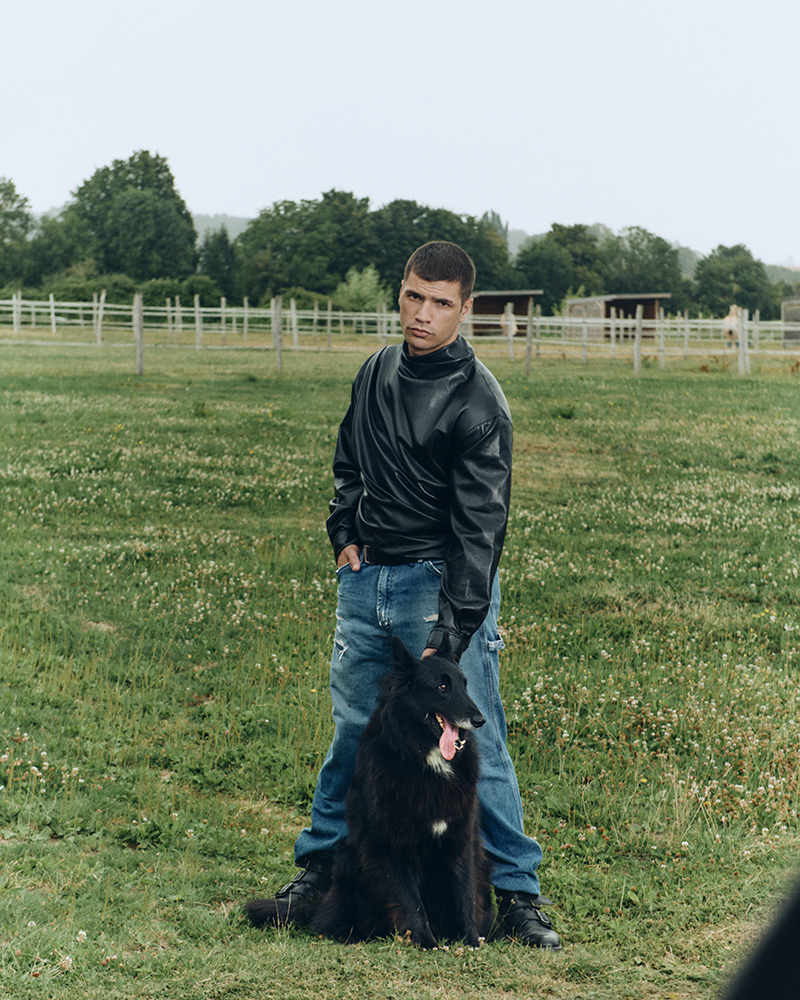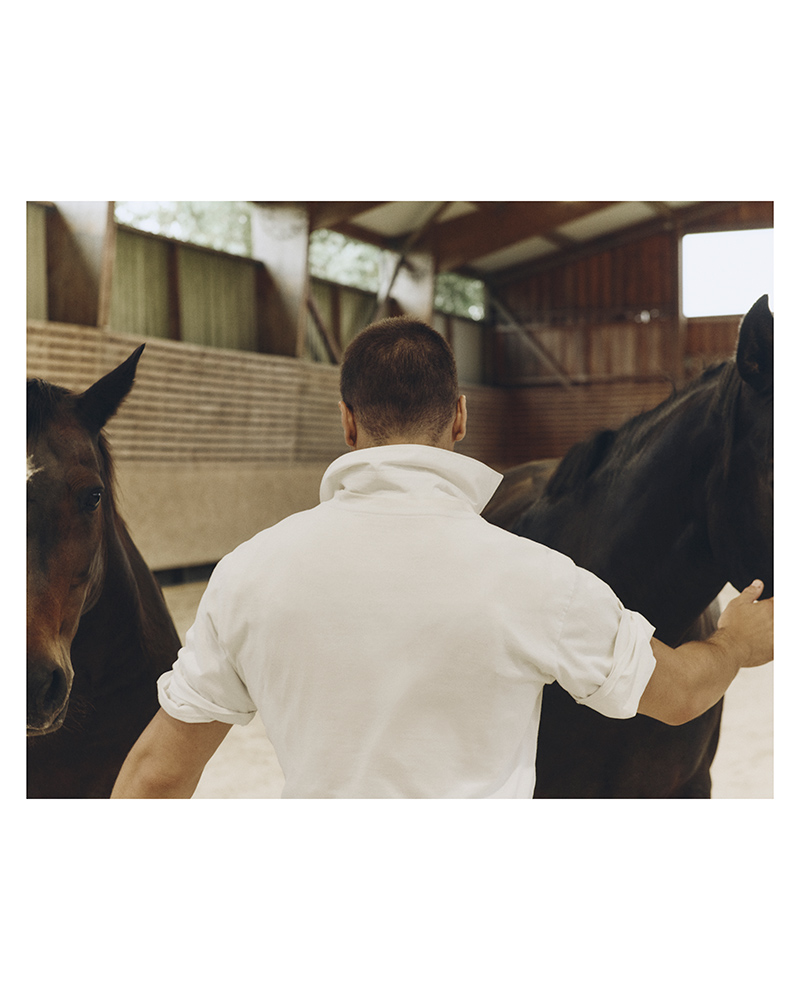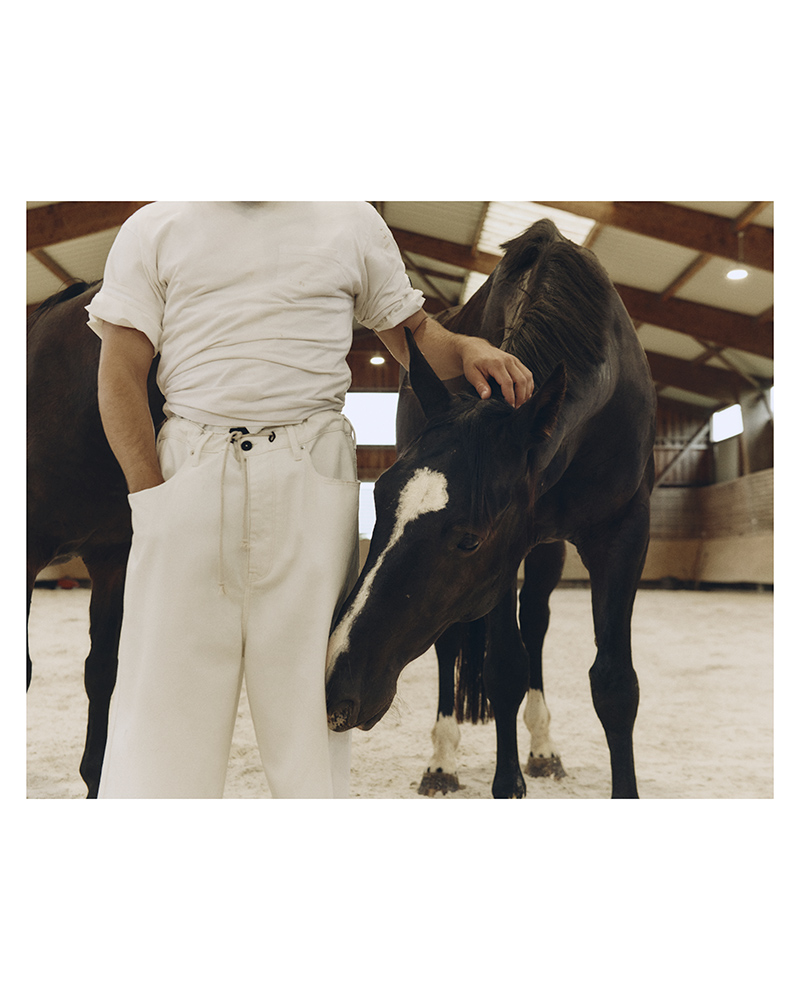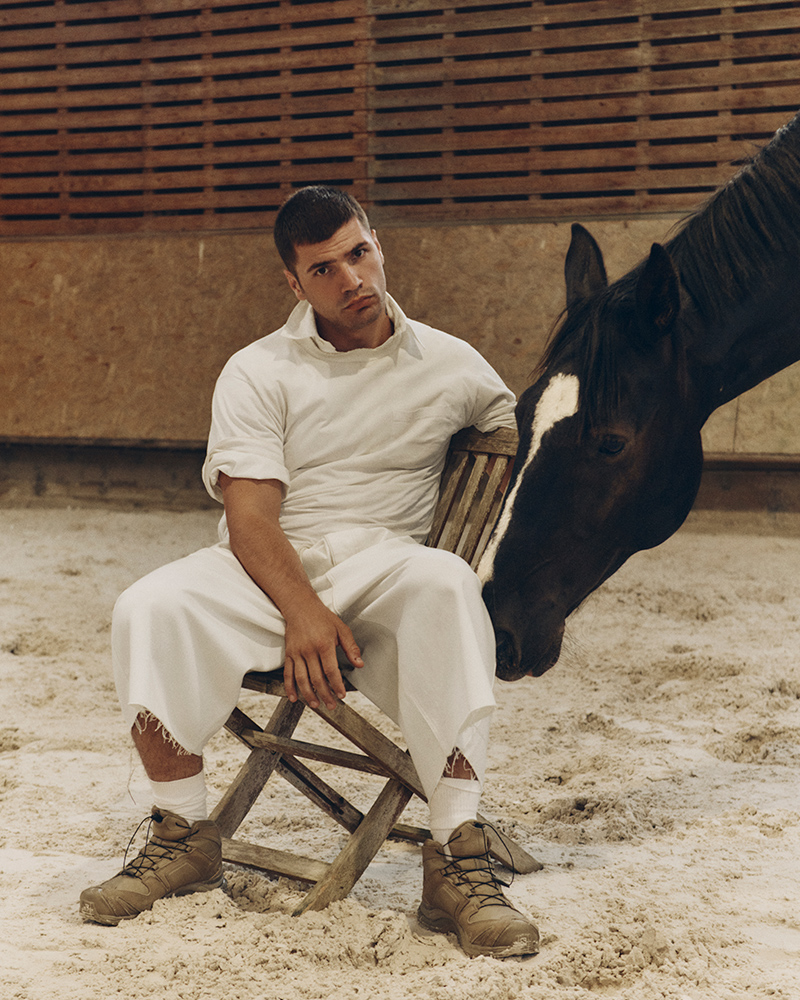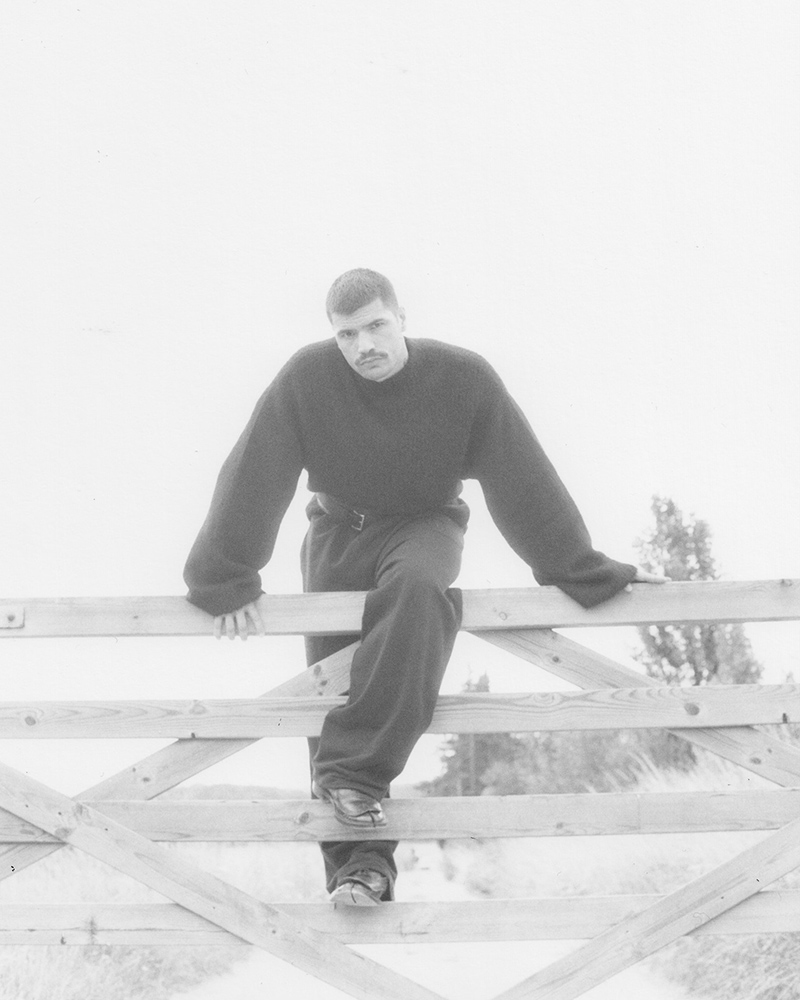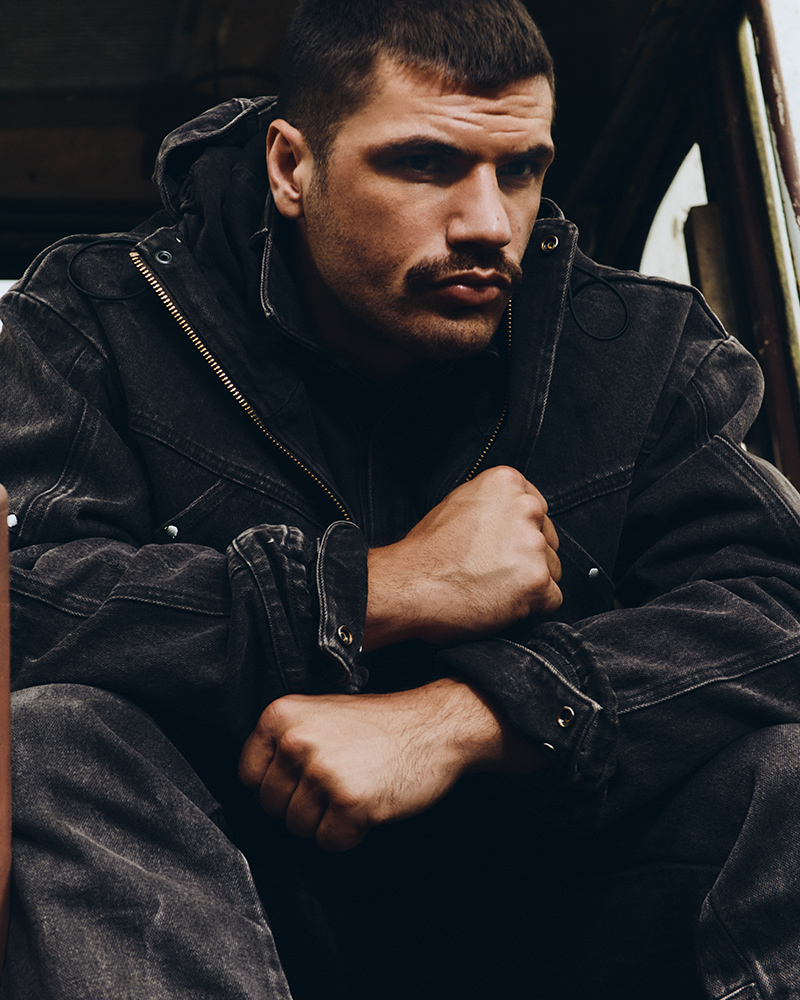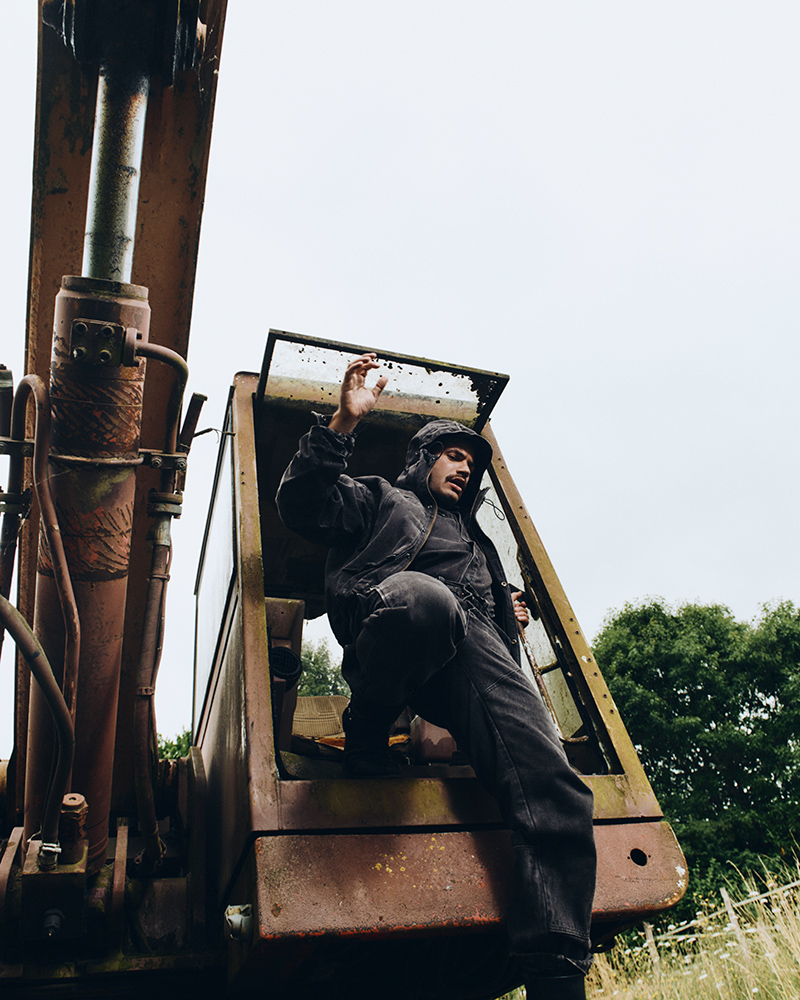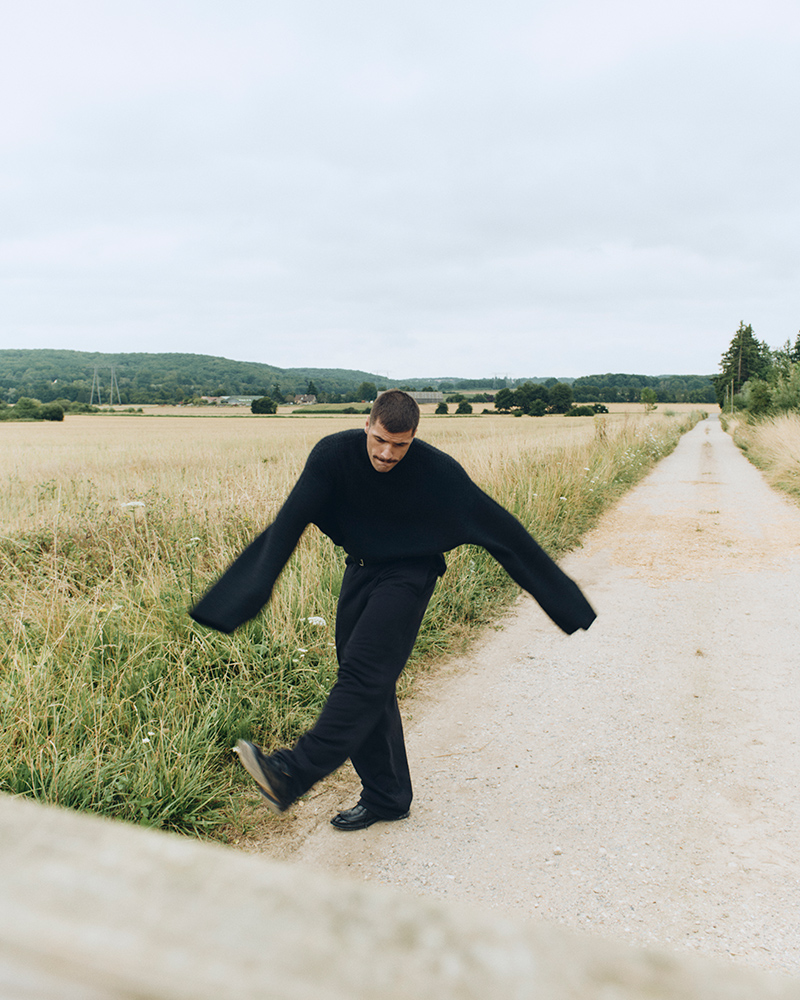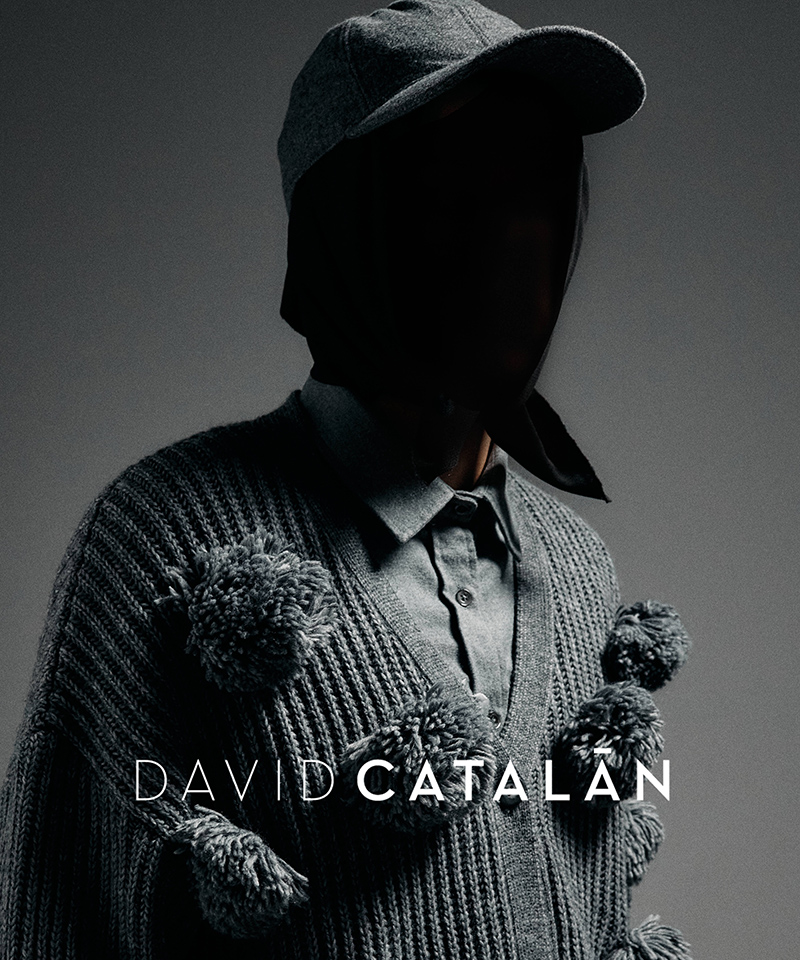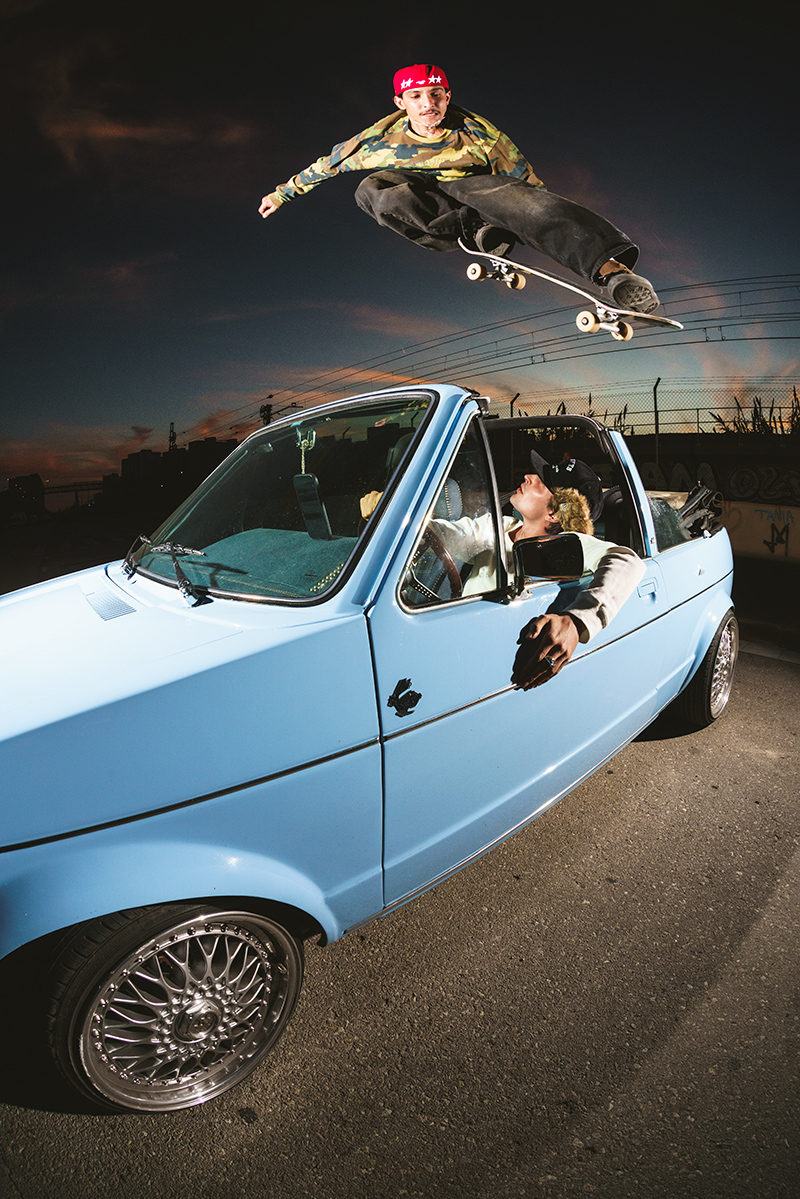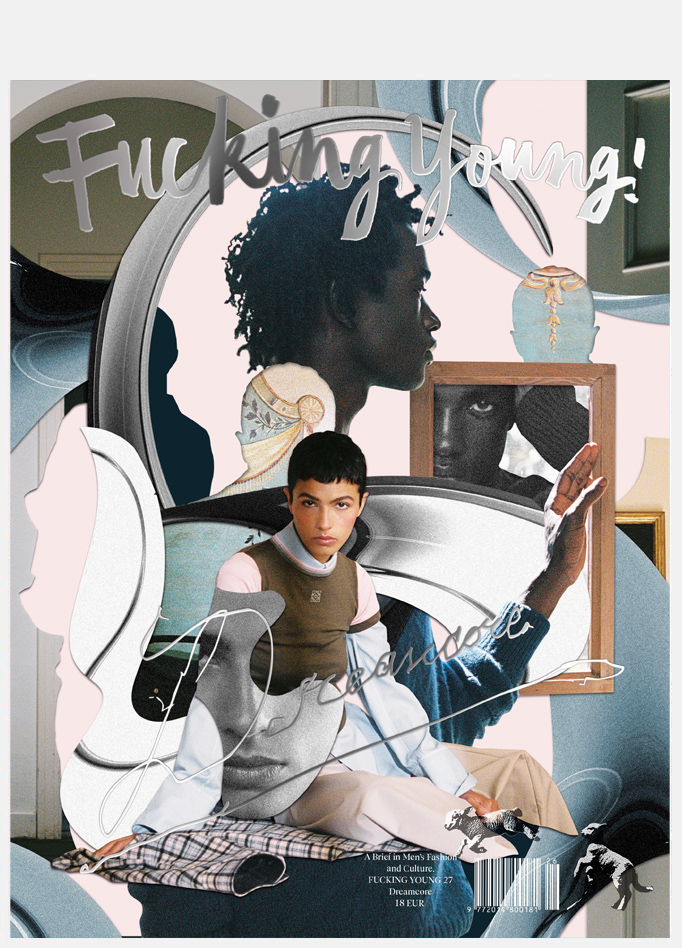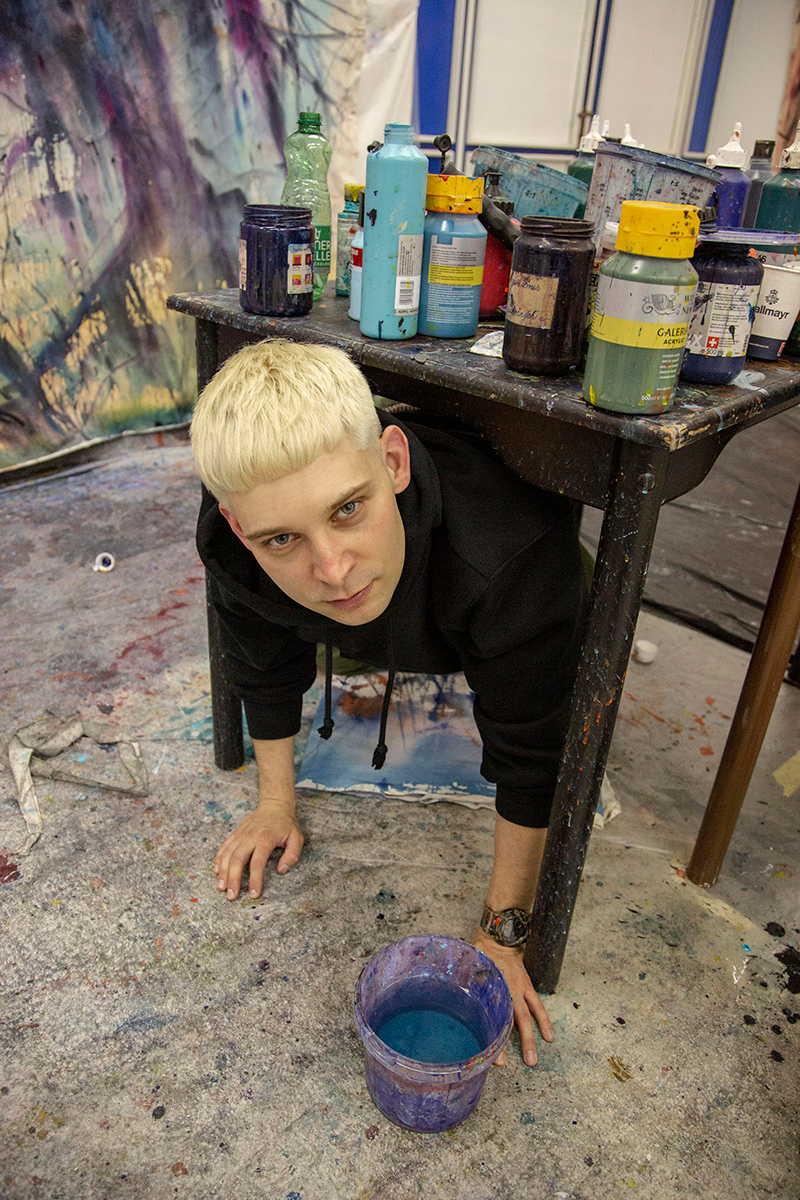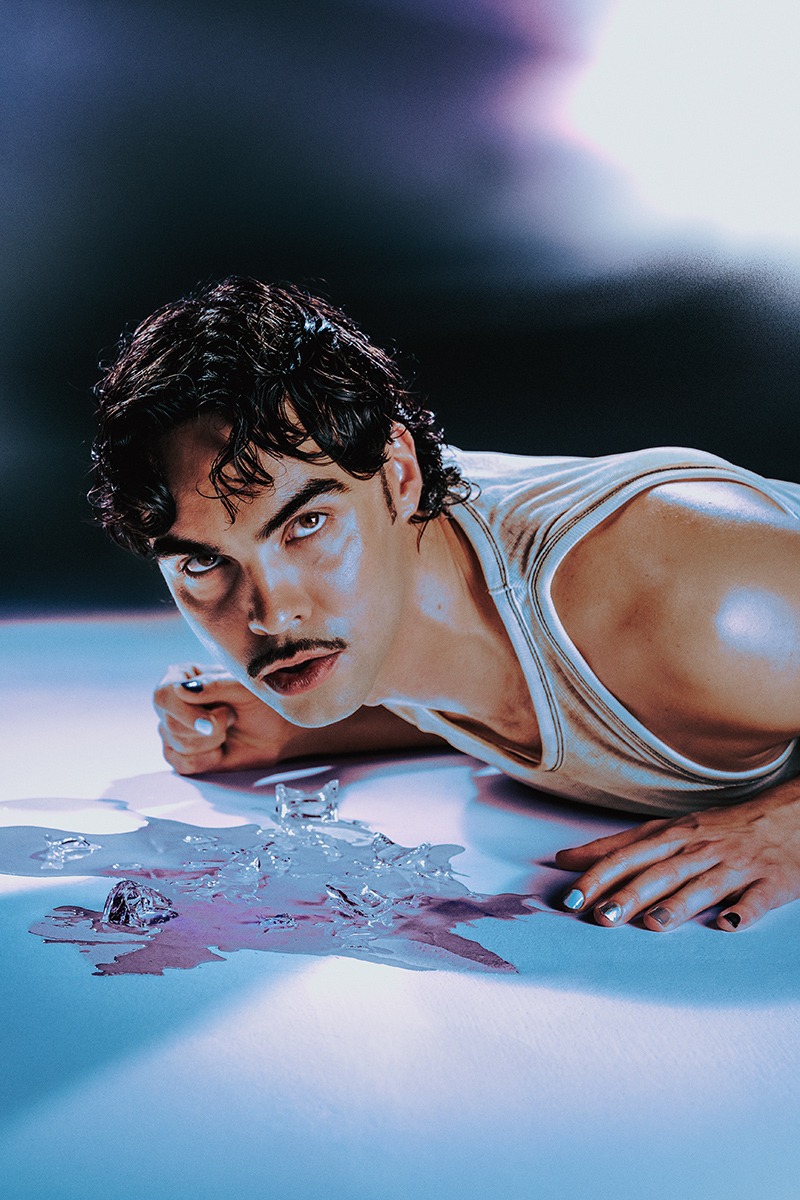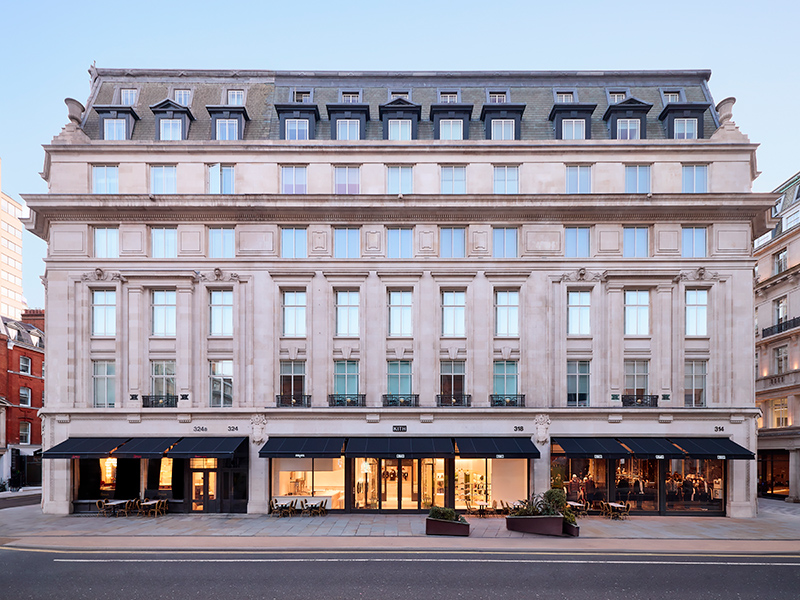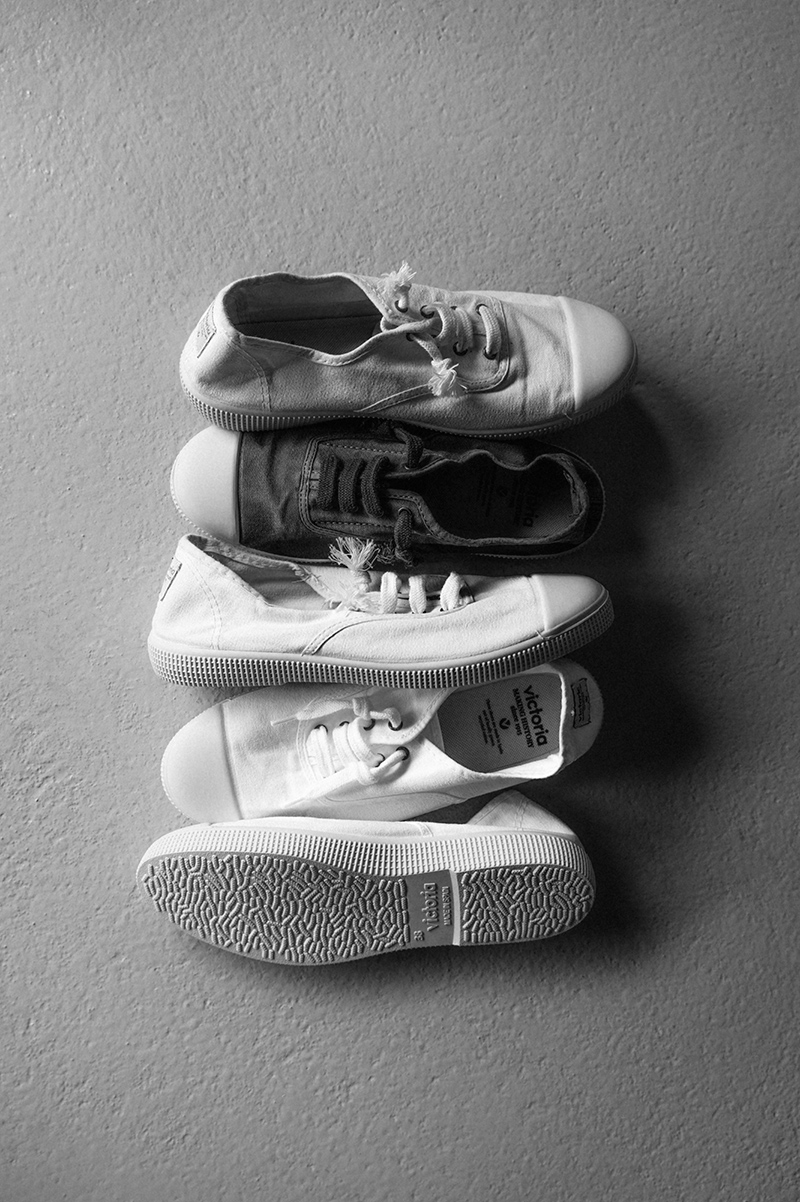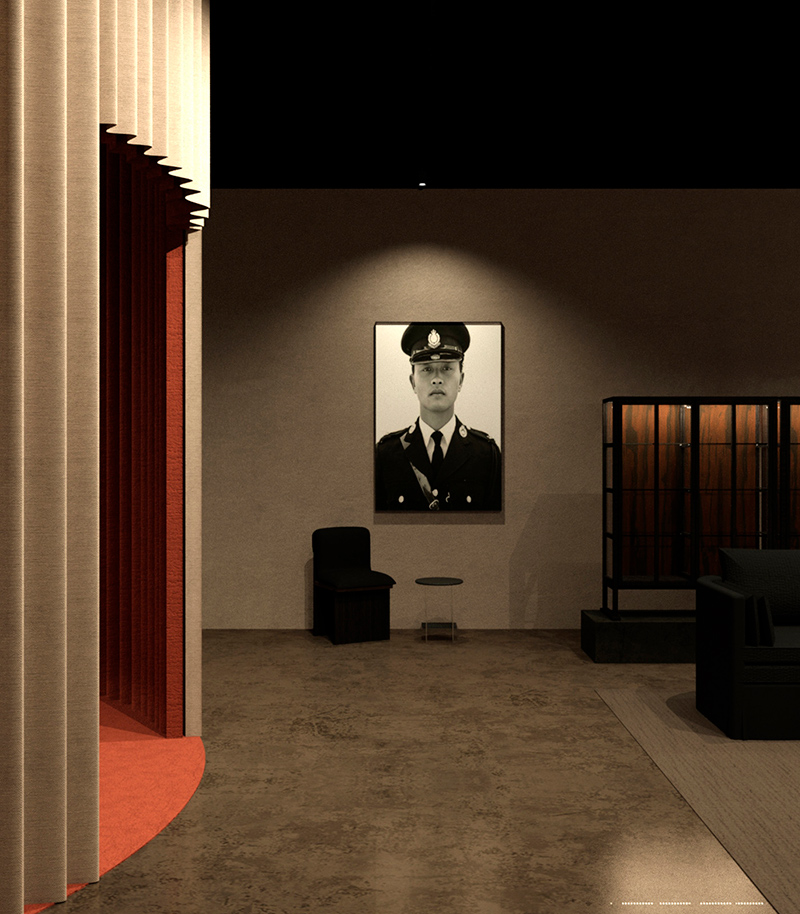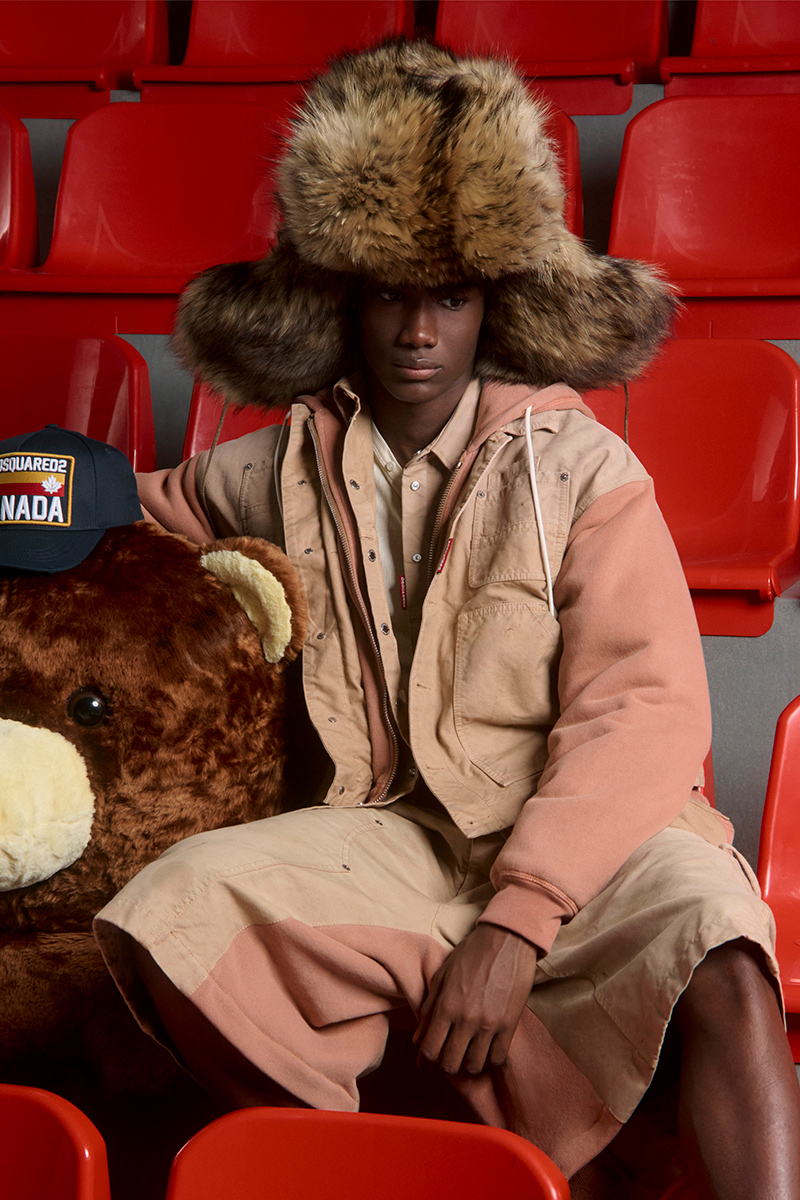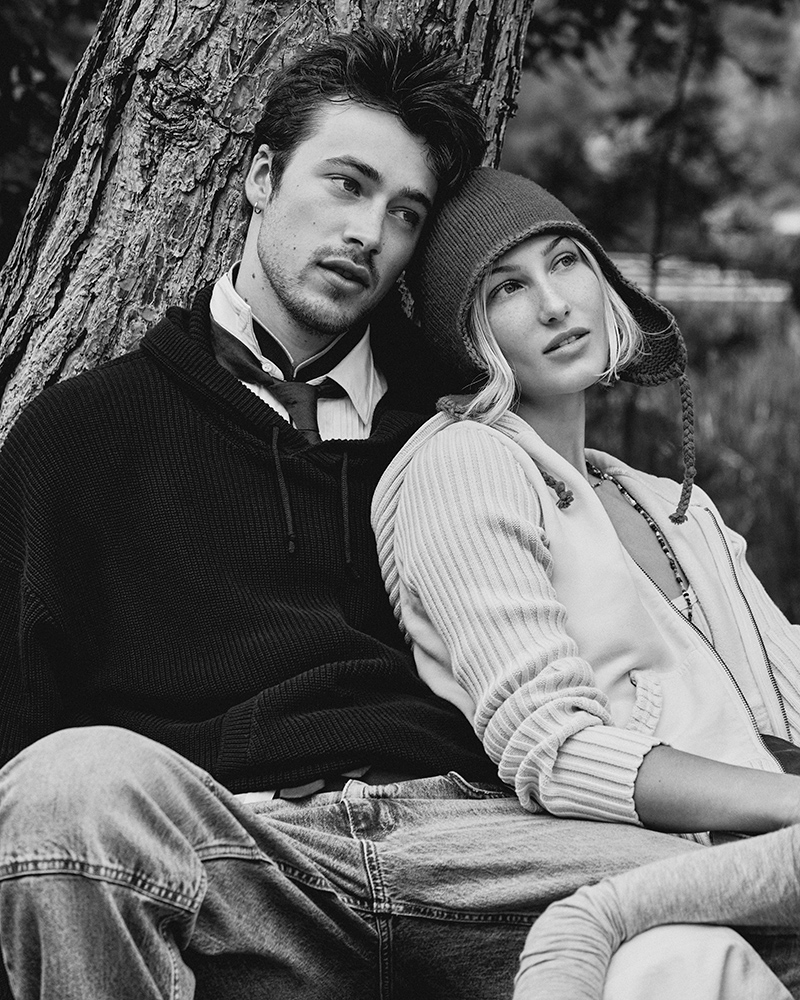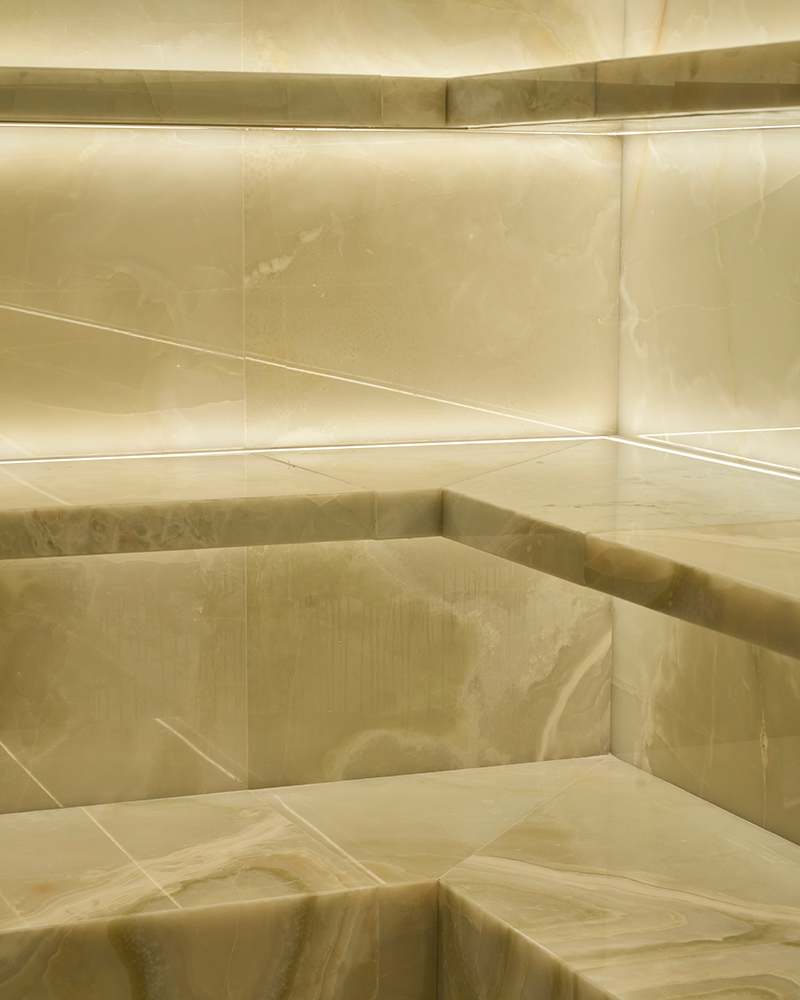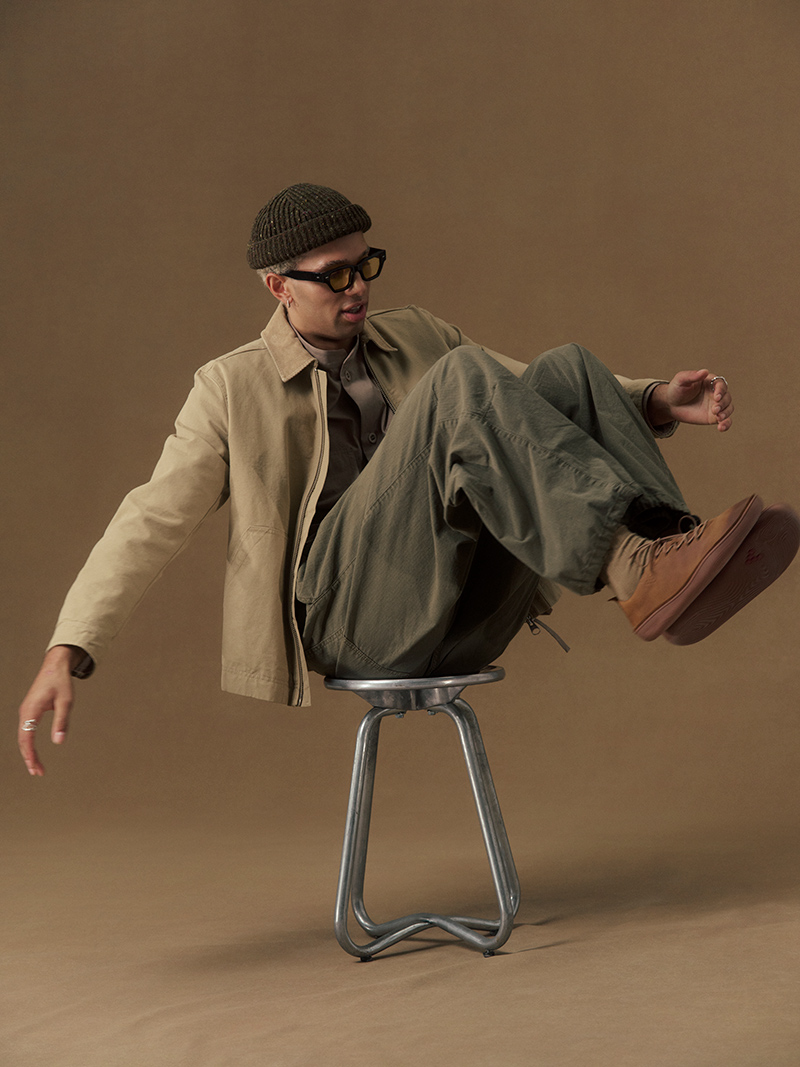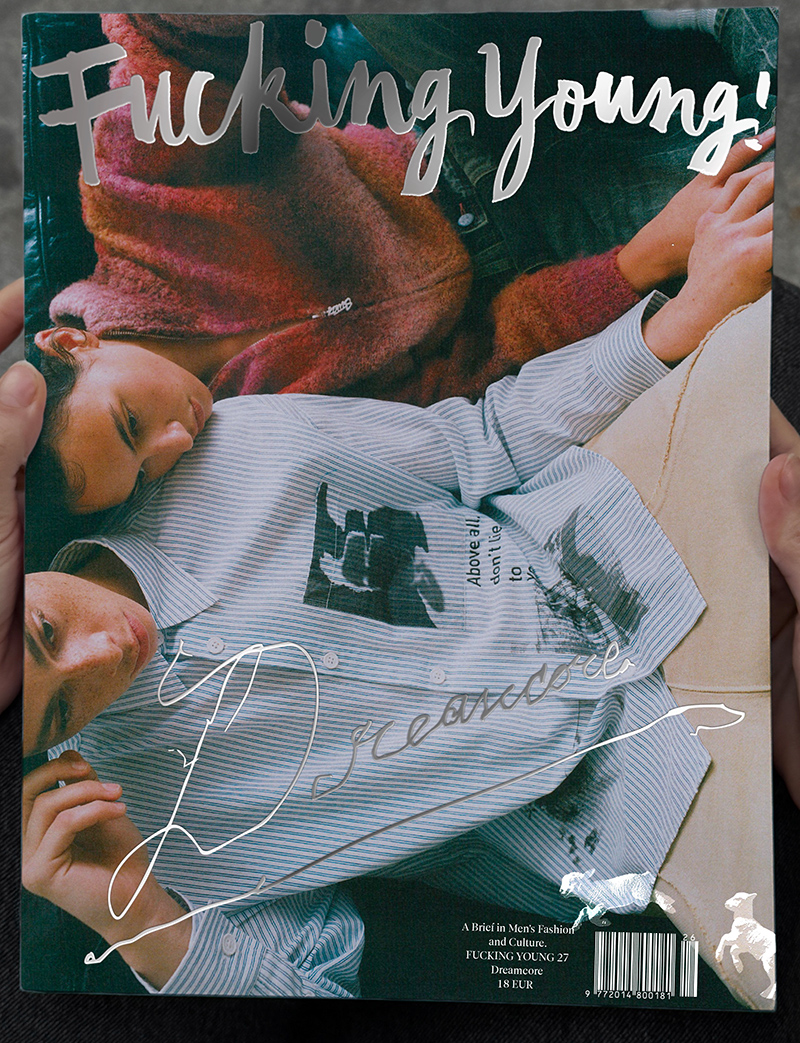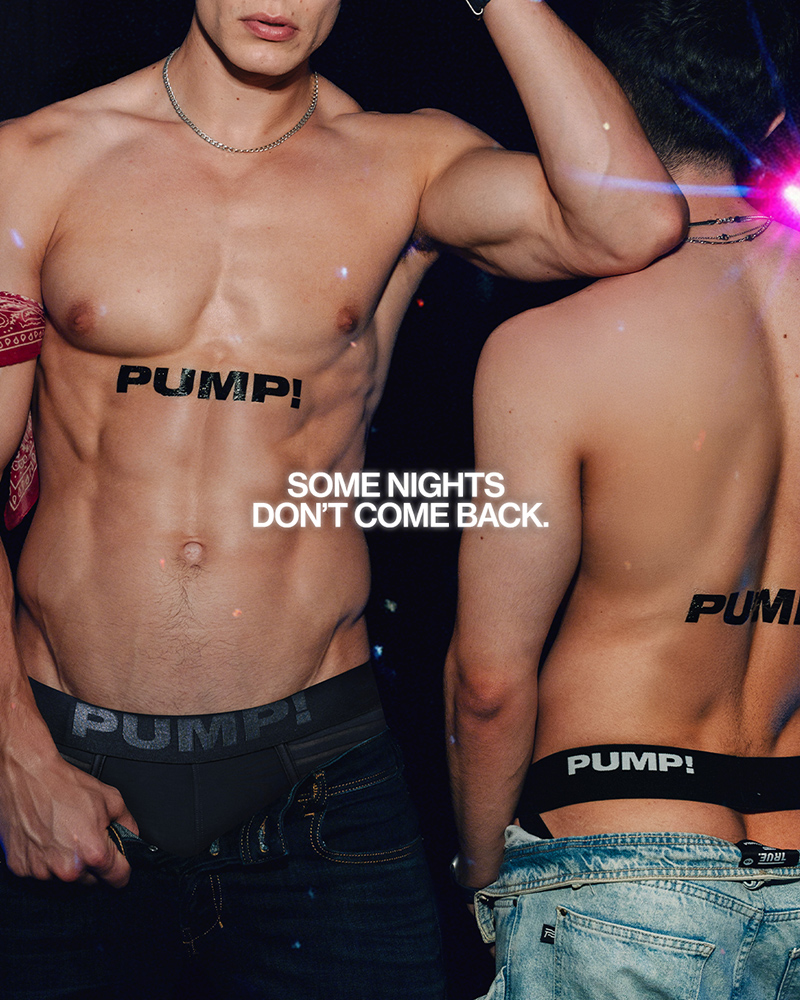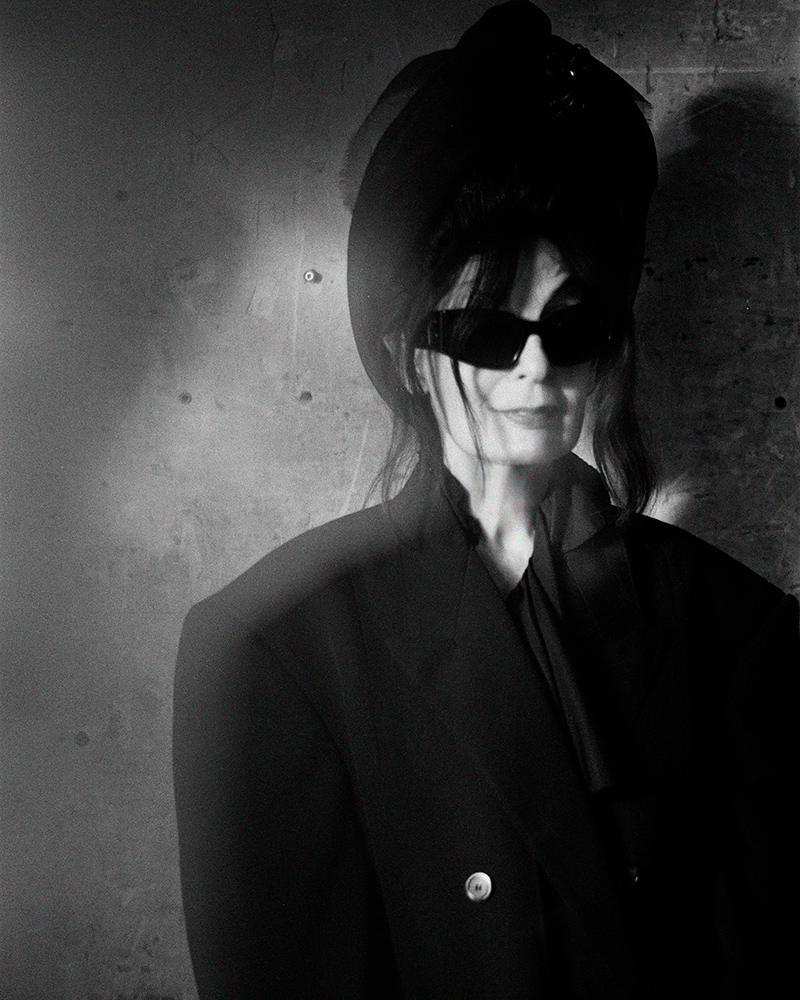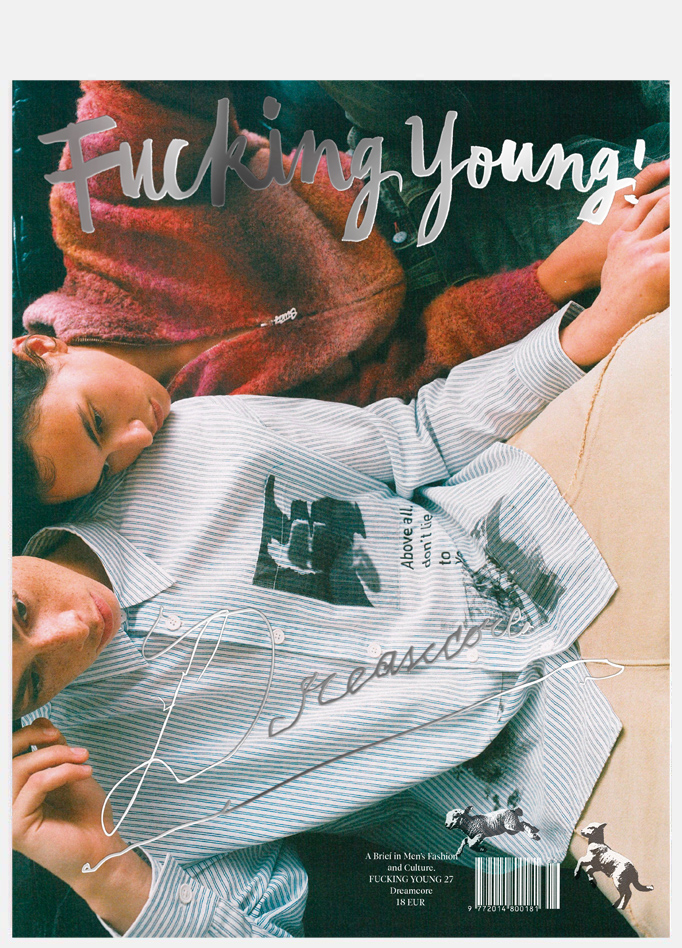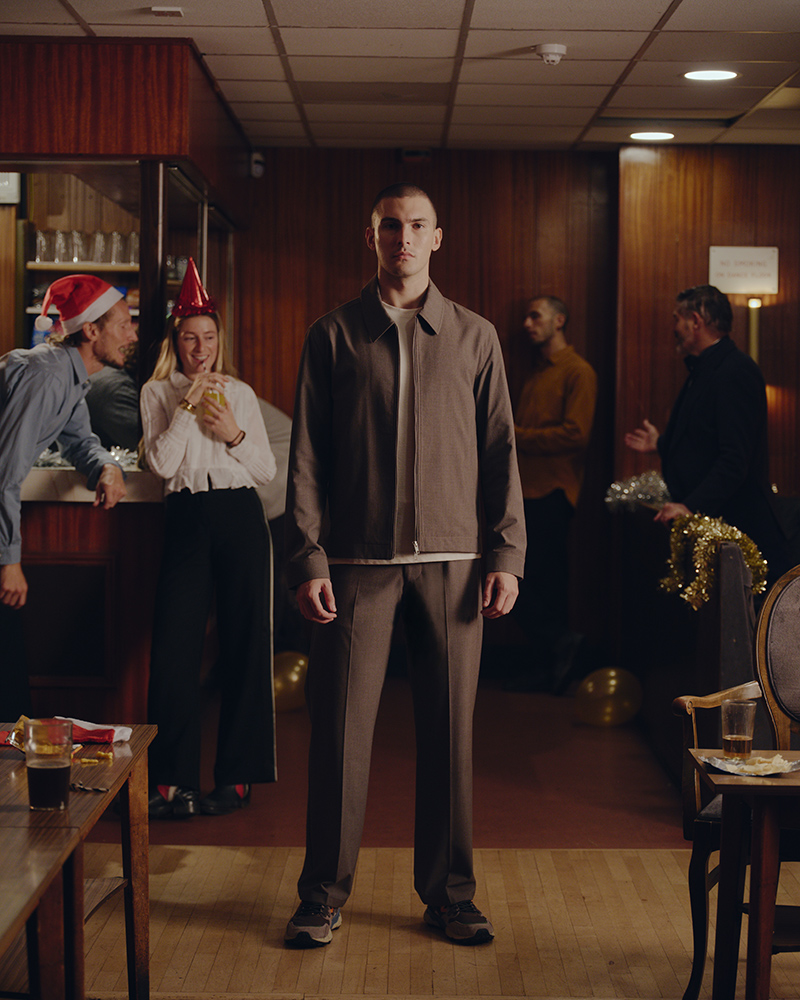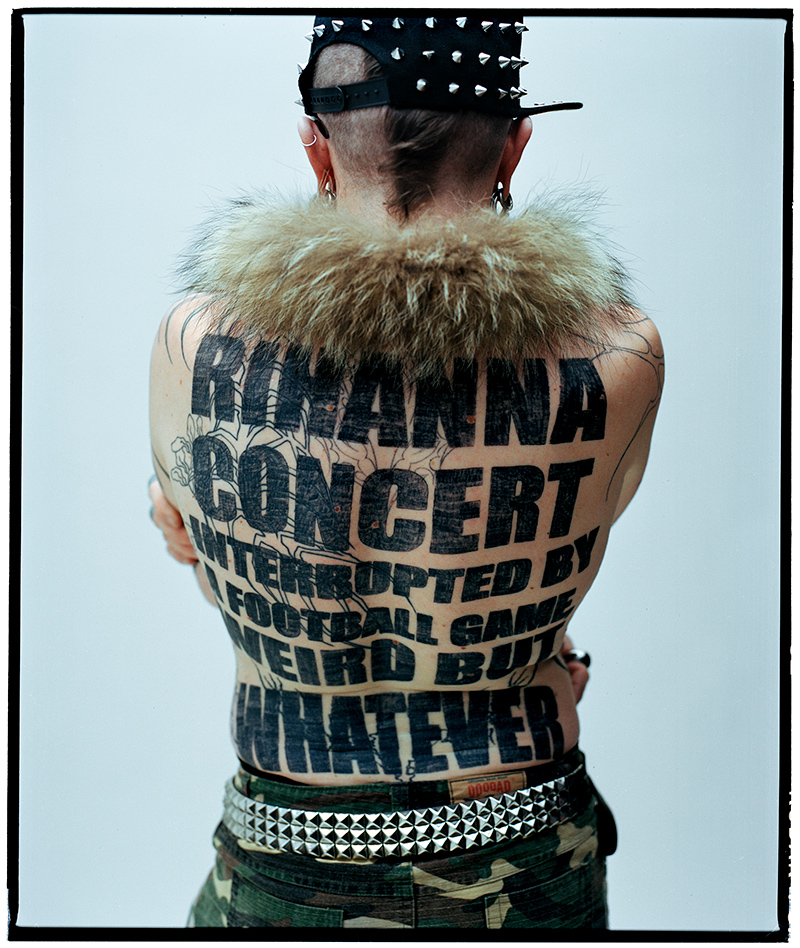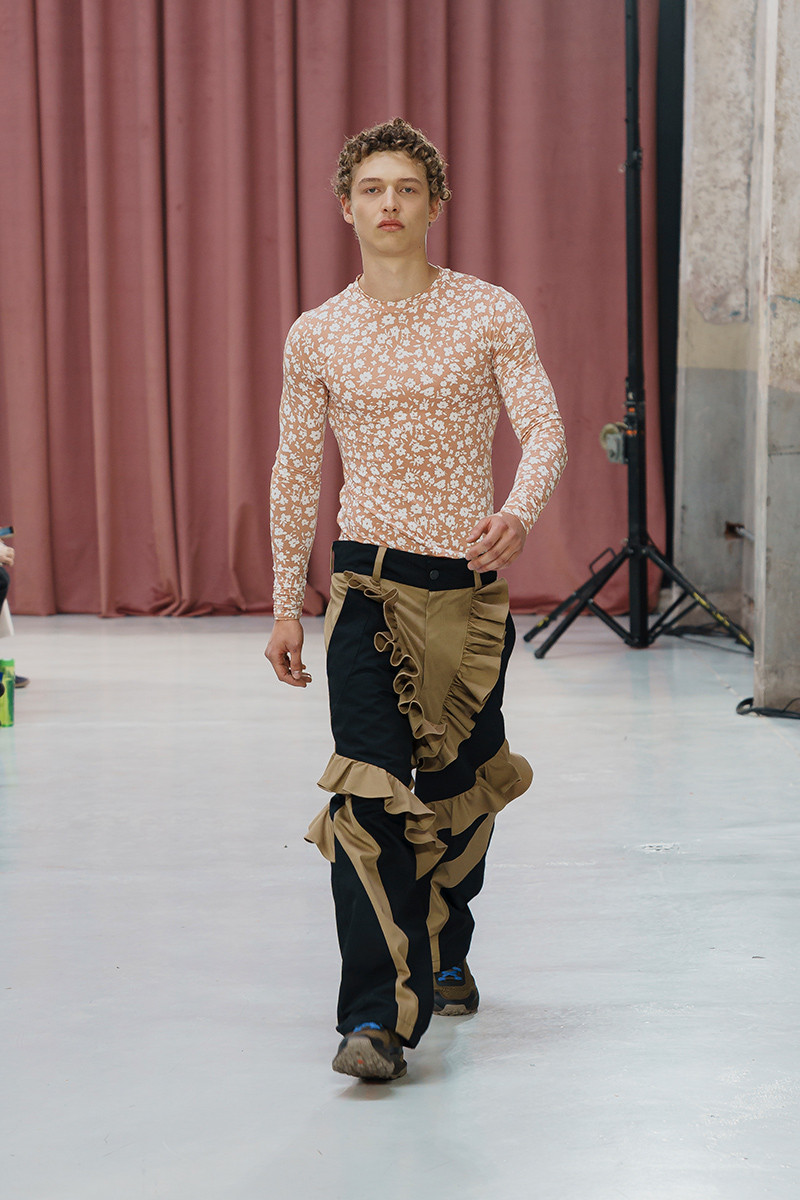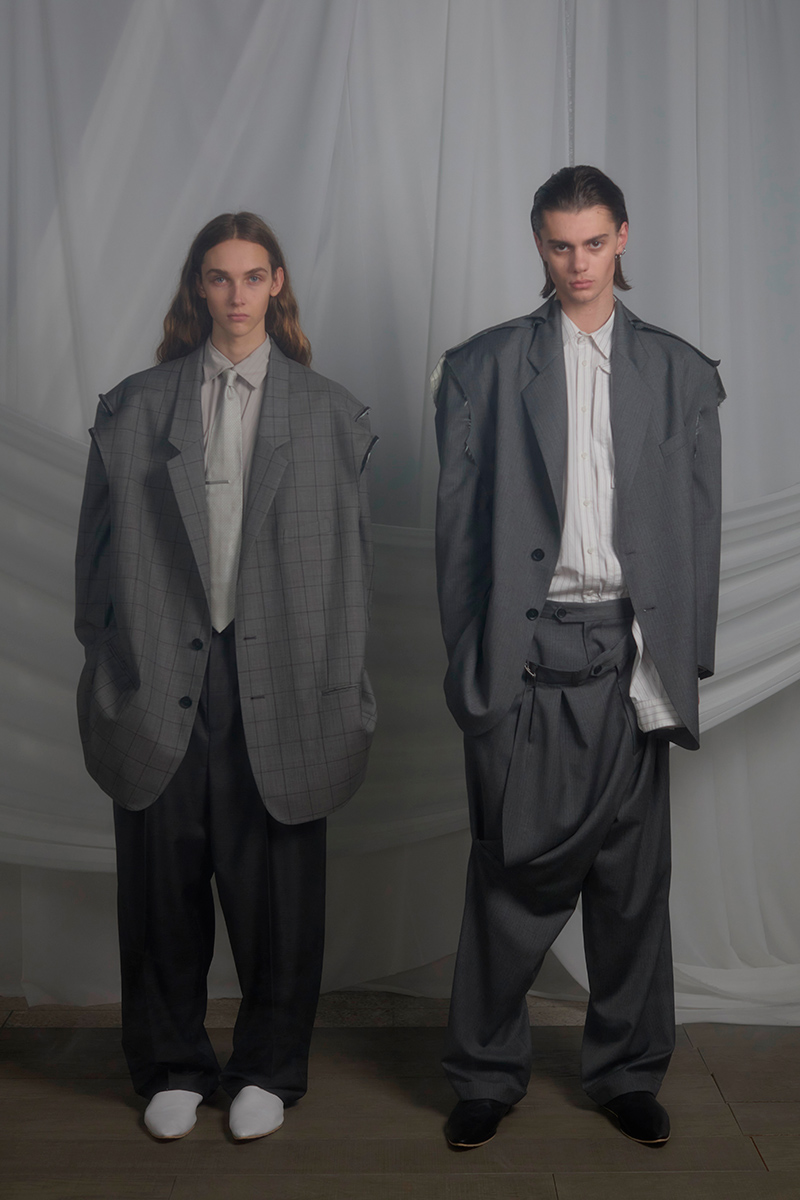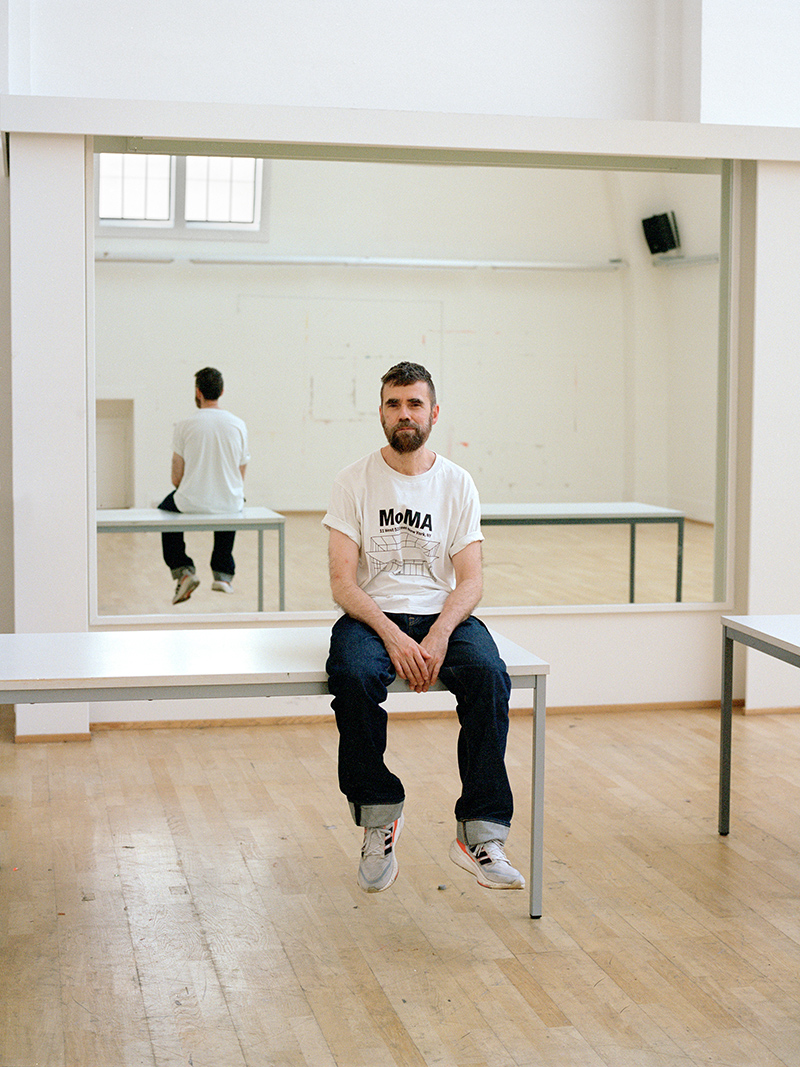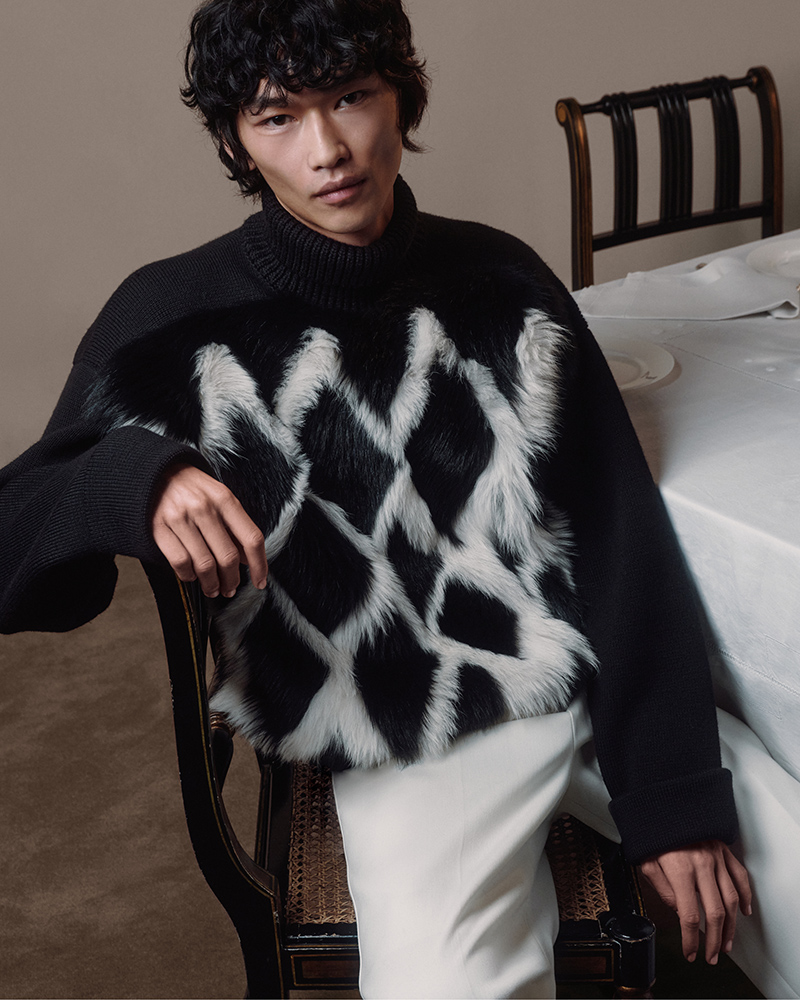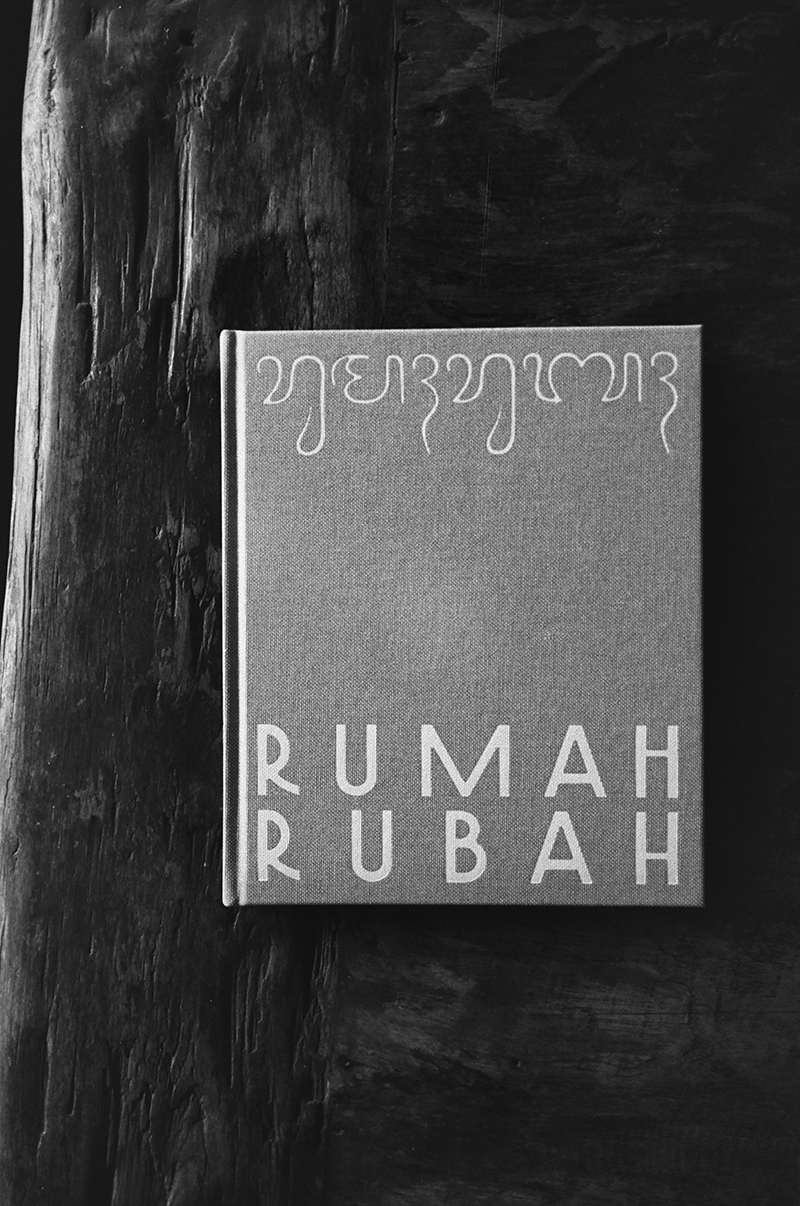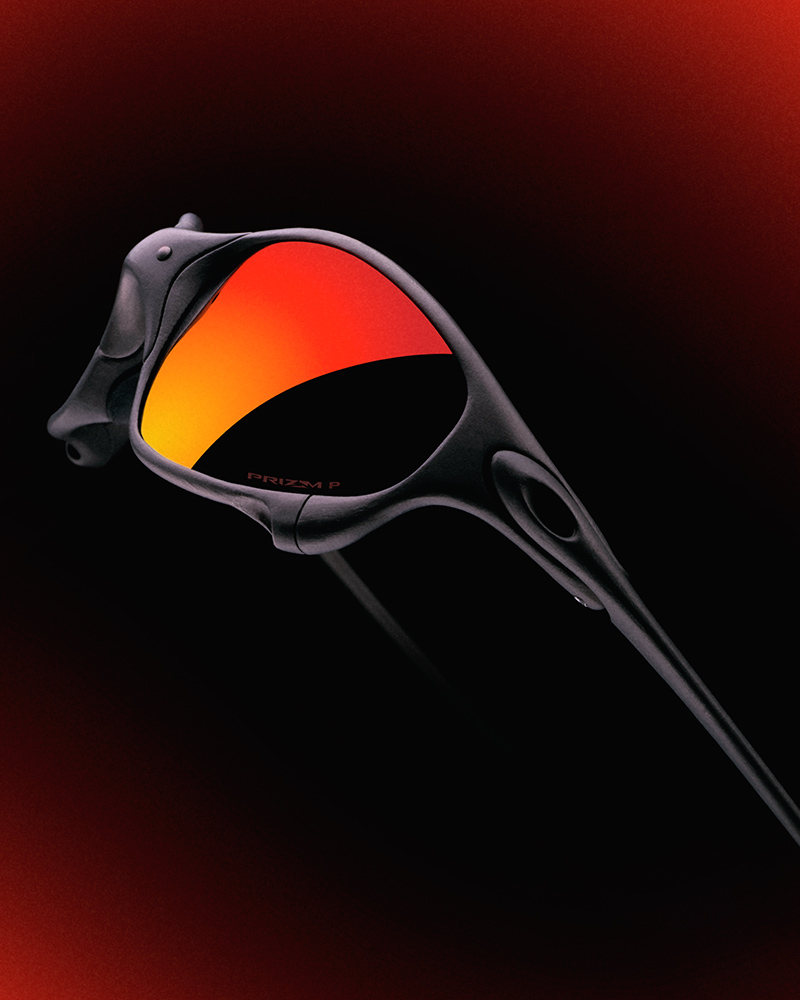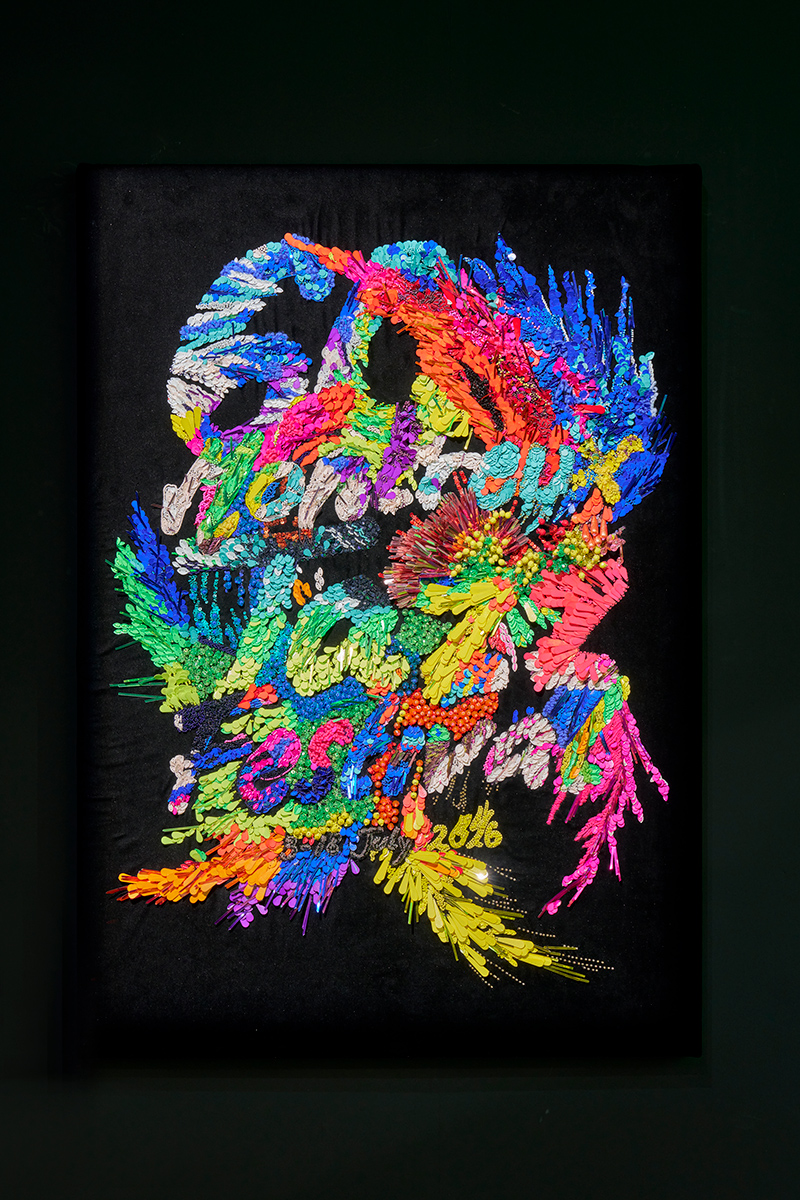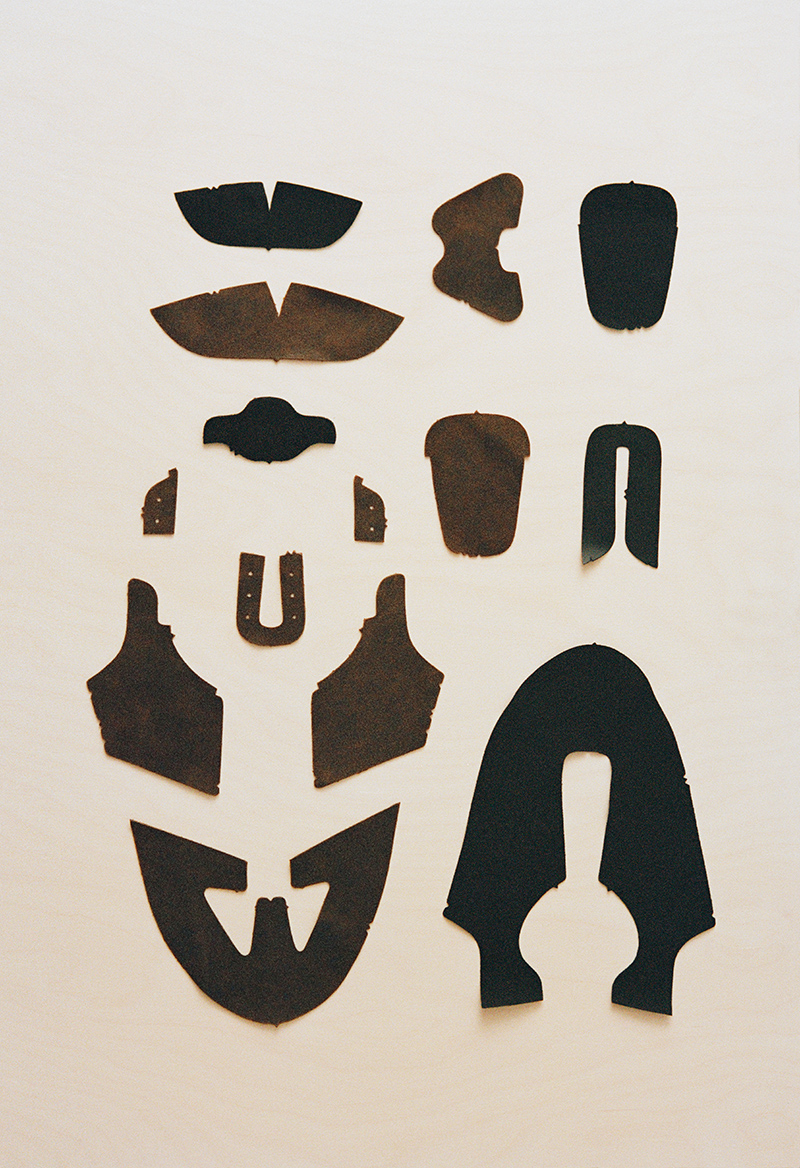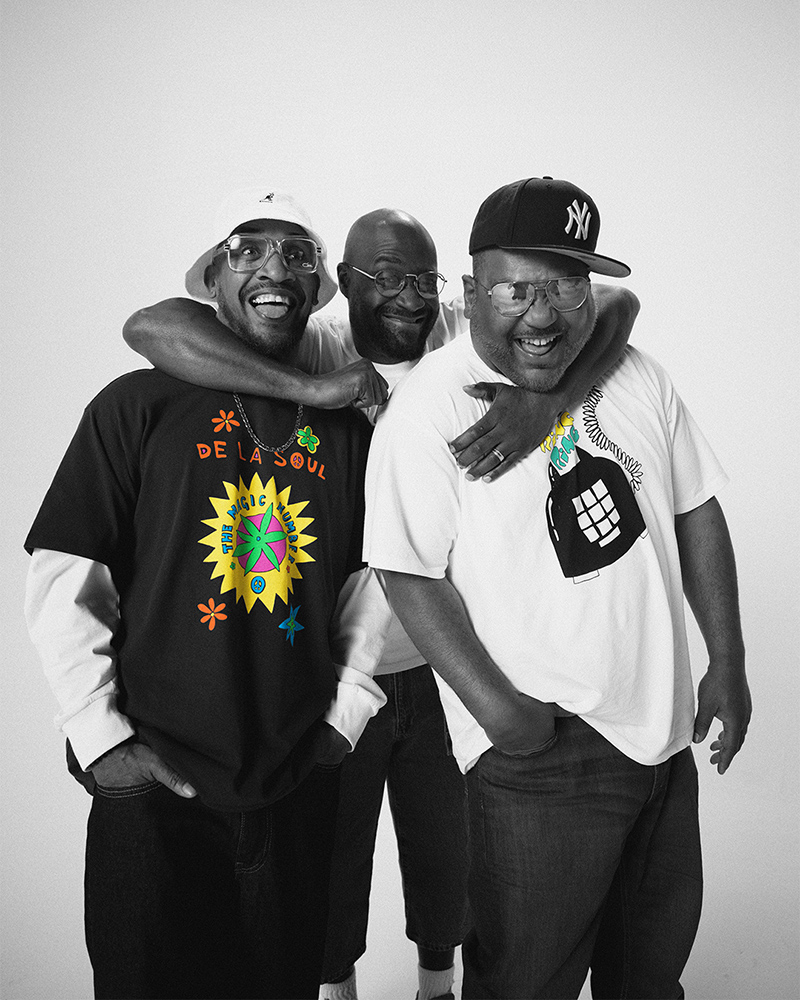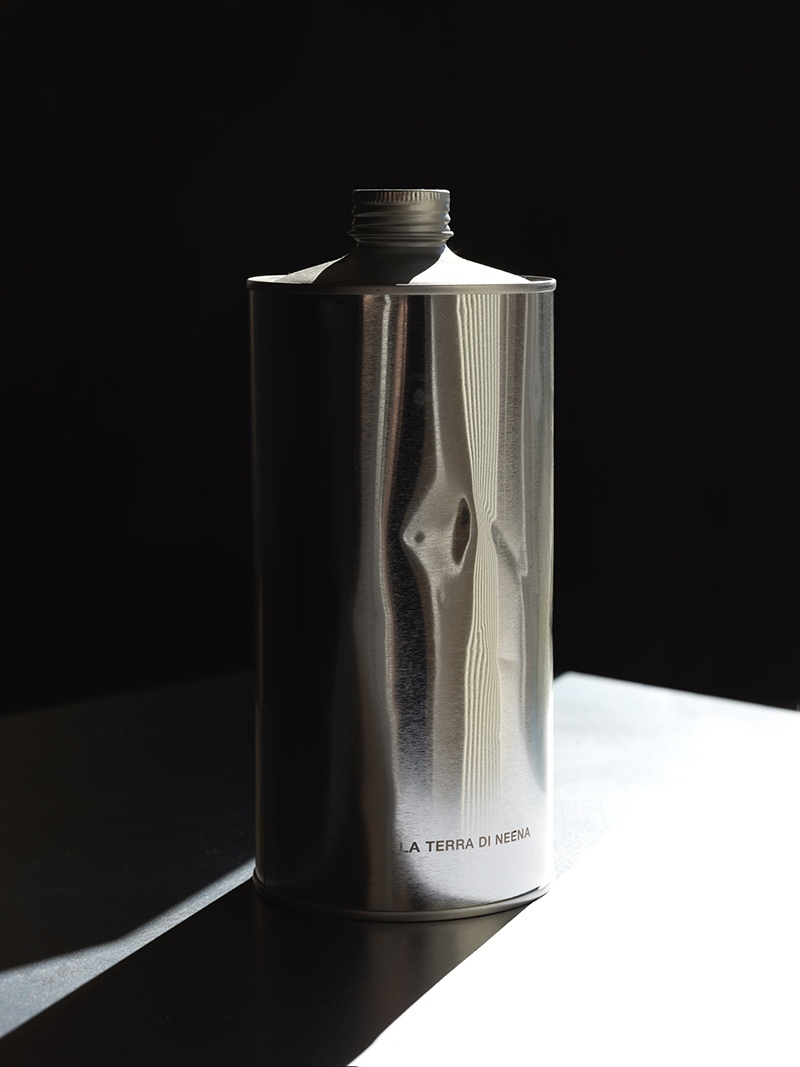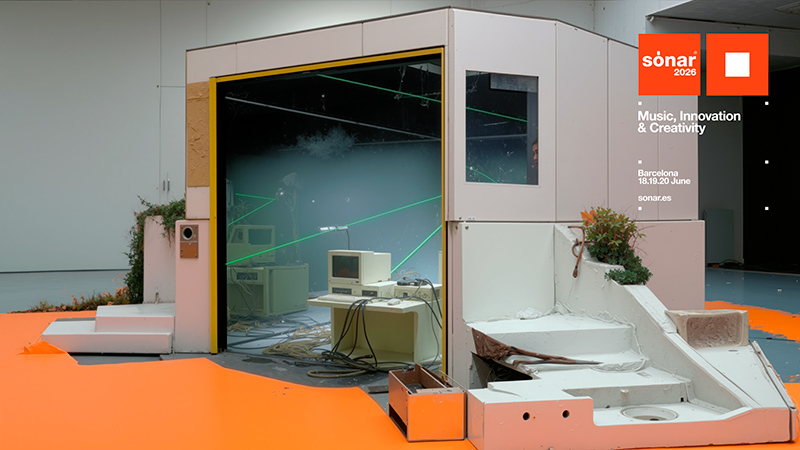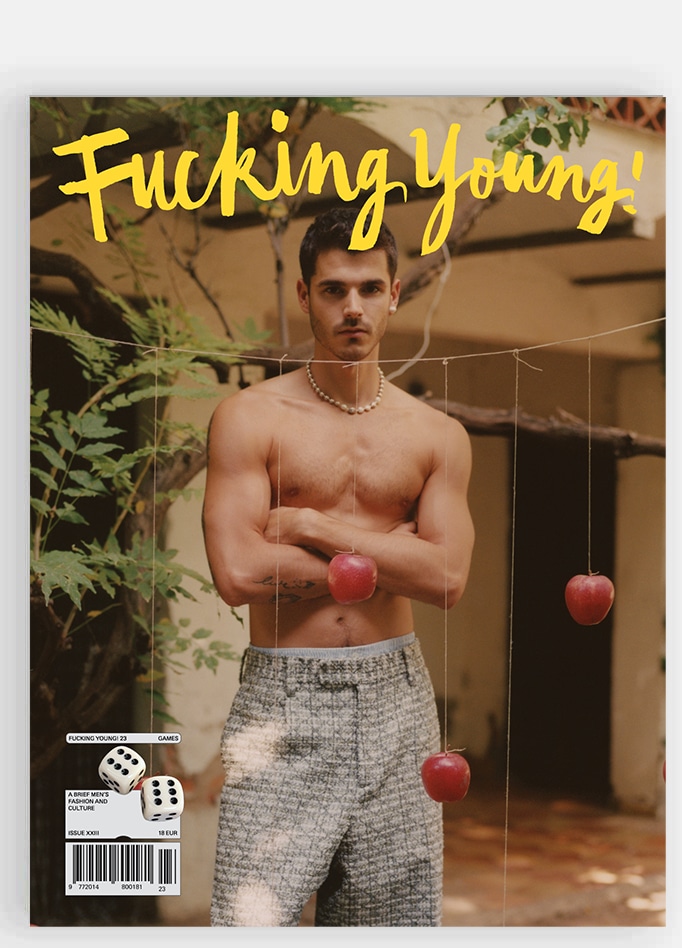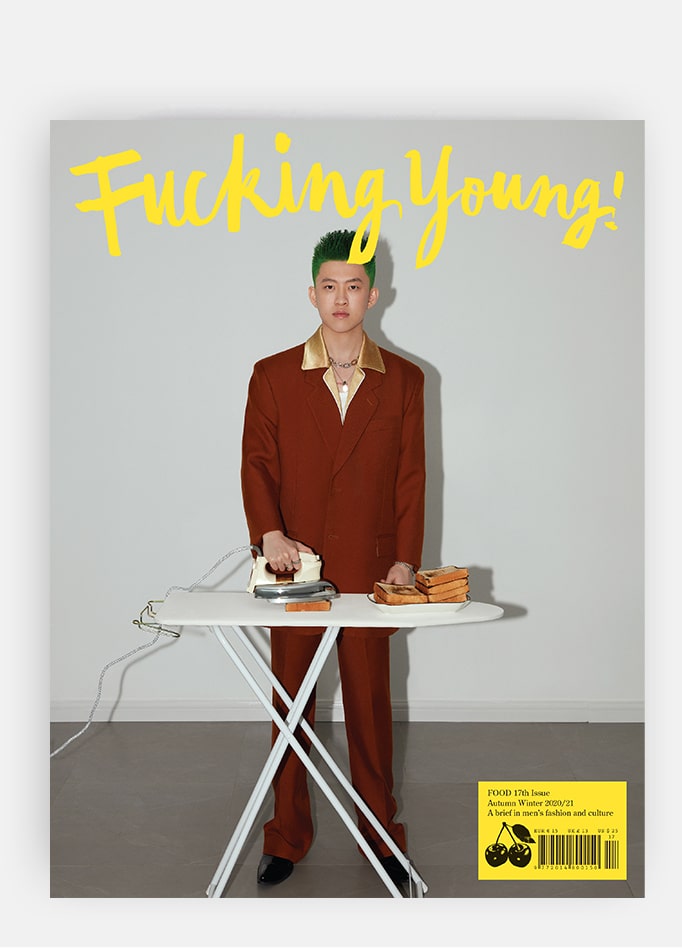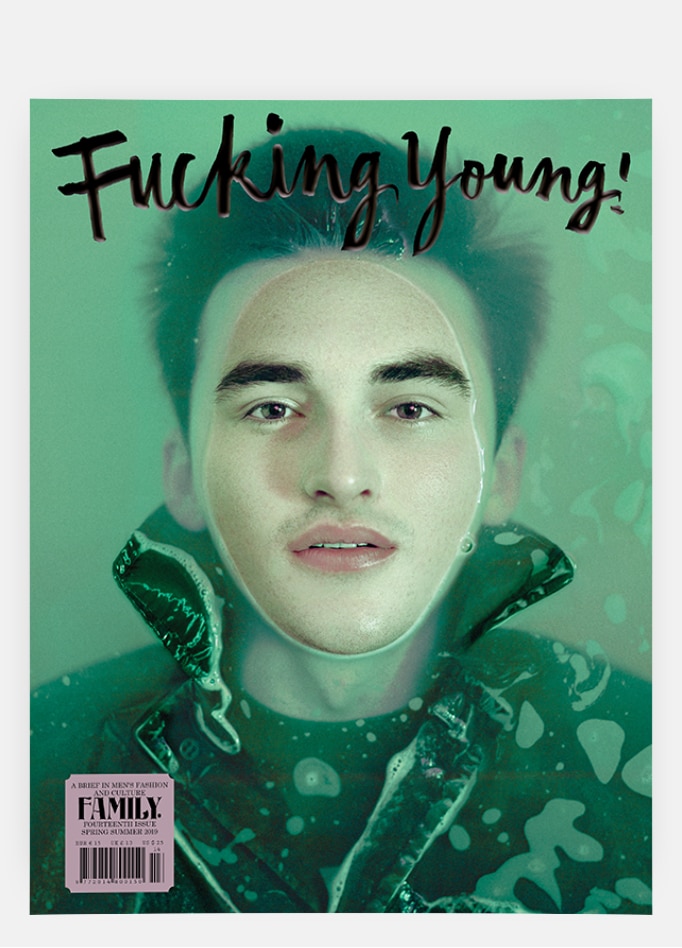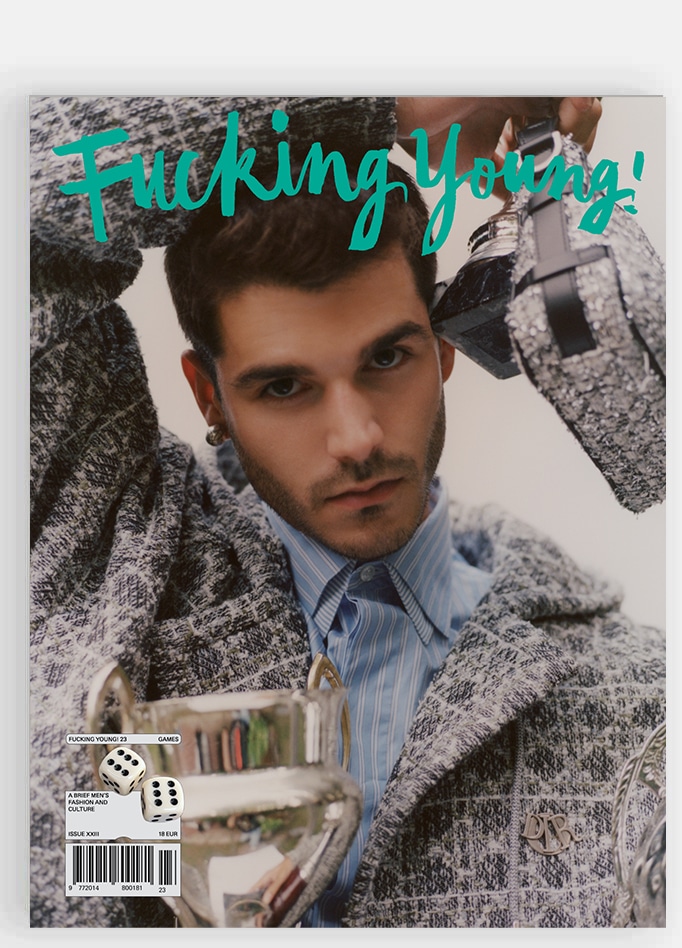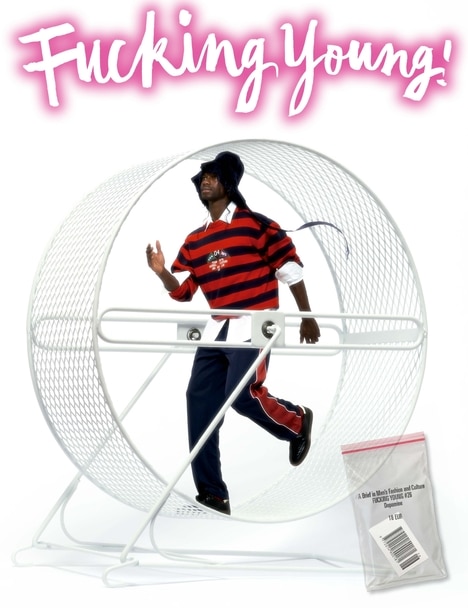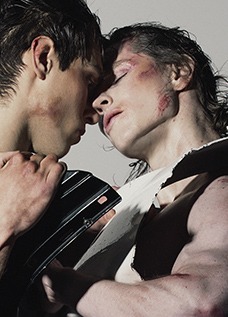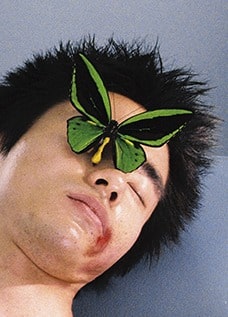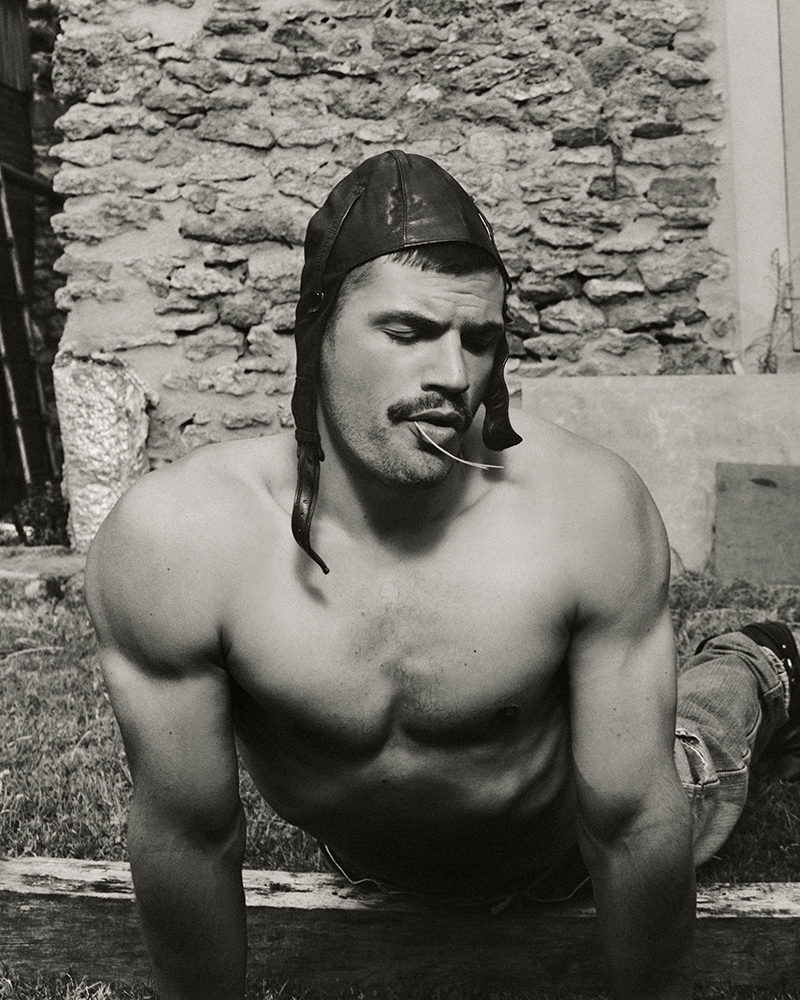
Hugo Diego Garcia didn’t stumble into cinema. He fought his way in, quite literally. A former boxer who swapped gloves for film sets, his breakthrough came with Tony (which he wrote, directed, and starred in), where his raw energy and emotional depth drew wider attention, proving he was more than just passing through.
Soon after, he found himself at Cannes with the crew of The Substance, a surreal leap from sparring rings to the Croisette. But for Garcia, it isn’t just about collecting acting credits. He’s building his own universe. In Vache Folle, co-directed with Lorenzo Bentivoglio, he tells the story of Cédric, a broken young father haunted by his past in a remote Jura village, desperate to win back his daughter from a violent rival.
Now, with Enfrentados, a new project by Óscar Pedraza in which he stars opposite Ester Expósito, he enters yet another chapter of his young career. In this exclusive editorial, shot by photographer Boris Mondélice and styled by Andrew Gutrov, Garcia embodies that same duality: raw strength and cinematic sensitivity, a blend of movement and stillness.
Humble, curious, and quietly determined, Garcia is carving out his own space in cinema, one bold and unexpected move at a time.
If someone scrolled through your camera roll, what’s one photo that sums you up better than any press kit?
Mostly screenshots for mood boards of the next films. And raw, crooked selfies I hope never leak.
You almost went into boxing before cinema. What pulled you toward film instead of the ring?
I had more to give in stories (acting, writing, directing) than in fighting. Fighting ends early. Art lasts a lifetime. And brain damage wasn’t appealing. By twenty I’d already bled a lot, lost neurons, a rib, and nose cartilage. Hollywood promised more than Vegas.
Your work often carries a strong physical presence, whether through boxing, movement, or silence. How important is the body as a storytelling tool for you?
Essential and too often forgotten. The first thing an audience sees is the body. Presence convinces instantly: posture, mass, stance. Subconsciously we believe the character based on multiple factors, the physical presence being one.
As both director and actor, when do you feel more vulnerable: watching yourself on screen or showing your cut to an audience?
Showing the cut. On screen I don’t feel exposed. Maybe frustrated when I see a take off. As an actor you have no control that’s what you want to trust top directors. But a film you wrote, produced, carried from start to finish, that’s yourself on display. So yeah, showing the cut.
If you had to pitch Vache Folle to a friend in one line at a party, what would you say to hook them?
Pâté, PTSD, motocross, Albanians and cows.
The film has already touched the festival circuit. What’s one reaction or comment you received that stuck with you and made you think: they got it?
What kept coming back was “True cinema.” For me, that’s the highest praise. In a world of trends and content, where people chase currents, hype, and follow whatever moves, standing out as something true, real, feels good.
How important is it for you to now step into the visual side of the job? Doing photoshoots, engaging with fashion, shaping your image? Is it just part of the game, or do you see it as another form of expression?
Both. It’s part of the game, but also a way of showing more: defining taste, bringing out sides of a person the work alone can’t reveal. Fashion and cinema go hand in hand, and I’ve always been drawn to that connection. Different medium, same essence: visual, expressive, about what you project. I like that.
In this editorial there’s a strong contrast: strength and stillness, grit and elegance. How did you approach stepping into that space? Did you see it as playing a character, or was it more about revealing another side of yourself?
Closer to myself, because I was in my element. The clash between elegance and urban refinement, and raw, rugged grit. That clash is compelling.
